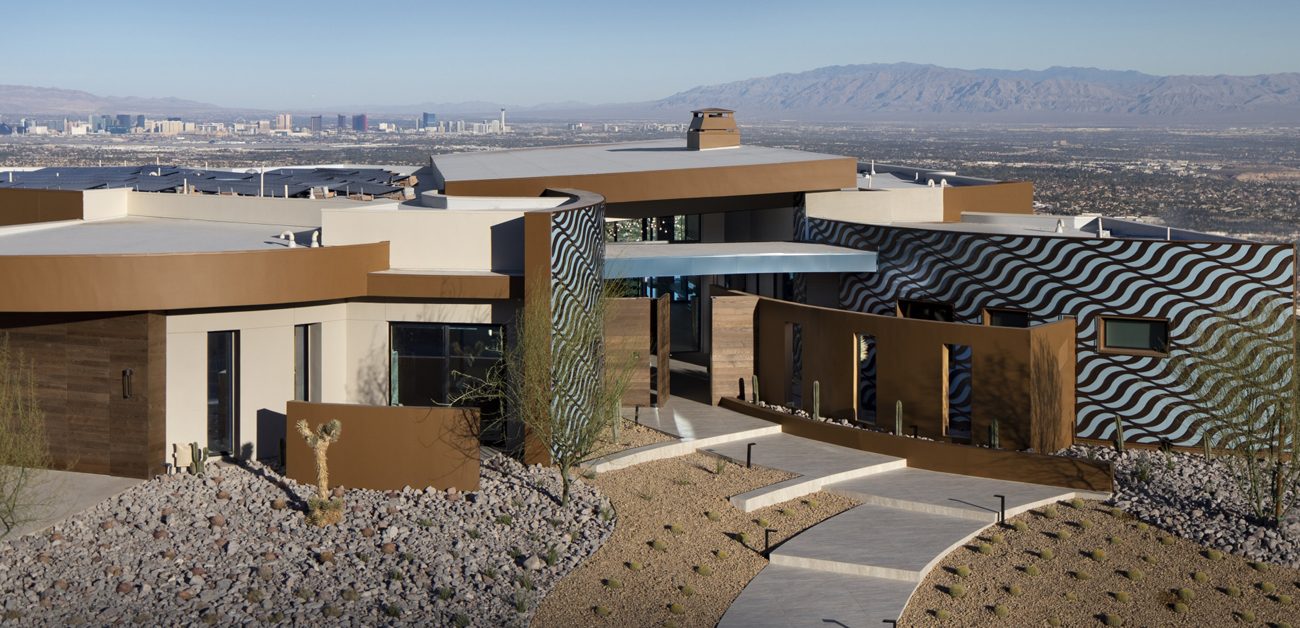Category Archives: Uncategorized
Why Staging Matters

© windy Li – AdobeStock
In its early years, staging was occasionally used in vacant and hard-to-sell homes. Nowadays, more listings are staged than ever. Here’s why.
Selling a home these days can be tough. Buyers have become more particular. Few people care that a seller spent decades collecting snow globes, colorful Fiestaware, or mugs from around the world. Instead, they’re looking for fresh, thoughtfully furnished rooms where they can create their dream setting rather than buy into the seller’s life.
This is why staging has become so important.
Fiona Dogan with Julia B. Fee Sotheby’s International Realty in Rye, N.Y., is a diehard staging advocate who recommends the strategy to all her clients. “You can’t list a house without staging it, unless it’s going to be a teardown,” she says.
The prime reasons staging has become commonplace is due to consumer demand and the proliferation of online home shopping, says Amanda Wiss, a professional organizer and owner of Urban Clarity in Brooklyn, N.Y., who added staging to her skill set.
“Most buyers first see a home online, so photographs matter,” she says. “If it’s too cluttered, they might not go look at it in person.”
While staging may have attained its popularity in higher-priced and vacant listings, it now appears in all segments of the market. As a result, more savvy real estate pros like Dogan recommend sellers have their homes staged before they list, no matter the price, size, condition, or location.
The goal is the same for all listings: to help the seller achieve the highest sales price in the quickest time, says Adelaide Mulry, an agent with Daniel Gale Sotheby’s International Realty in Locust Valley, N.Y., also a professional stager and designer. The good news is that the number of people available to stage a home has increased dramatically in recent years, with 28% of listing agents staging sellers’ homes before listing, according to the National Association of REALTORS®’ 2019 Profile of Home Staging report.
Sellers can take their pick of whom to hire. There are full-time professional stagers, real estate professionals who have jumped in to learn, and professional organizers like Wiss. Some home owners like to do staging themselves, motivated by reality TV shows and Marie Kondo–style decluttering books.
There’s a growing list of courses as well, such as the three-day program offered by stager and designer Kristie Barnett of The Decorologist in Nashville. Other accreditation programs and industry designations—such as the Accredited Staging Professional or the Designer Society of America’s Certified Home Staging Professional—give a stager the chance to tout their expertise. Companies that offer staging resources have also become more plentiful in the form of attractive rental furnishings, artwork, and accessories. Some stagers and real estate pros prefer to buy merchandise, which Dogan has done.
Staging Works
After Wiss staged a two-bedroom condominium in Brooklyn, the owners received four offers at an open house that sparked a bidding war. The property sold for 25% more than the listing price.
Sellers who don’t stage a home before it’s listed risk losing out to comparable staged homes, says Christopher Barrow, co-managing partner and broker with Foundation Homes Property Management in California’s Marin County. “Nobody wants a home with Venetian plaster from the ’80s,” he says.
Staging first emerged in the 1970s after real estate pro Barb Schwarz, who has a background in theater, developed the concept and trademarked the term to help show her listings. It originally involved simple decluttering, making basic repairs, and arranging furniture; nowadays, it’s used to completely transform rooms and sometimes entire homes, so they look new. It can even go beyond adding furnishings; some use luxury towels, designer shoes, and handbags to suggest a lifestyle, says Lynn B. Telling, an agent and luxury specialist with Illustrated Properties in Palm Beach, Fla.
The number of rooms staged in a listing typically depends on a home’s overall condition, market competition, and listing price. But usually staging a few main rooms will suffice. “You can always leave a few spaces to a buyer’s imagination rather than do the entire house,” says Marcie Barnes, director of strategic growth at Prevu Real Estate, a New York–based real estate company that focuses on buyers.
Buyers consider the living room the most important to stage, followed by the master bedroom and kitchen, according to NAR’s staging report. In each staged space, the goal is to create a universally appealing, updated, clean setting—what Dogan calls “today’s staged aesthetic.” Common denominators include neutral colored walls and hardwood floors (a rug is OK as long some flooring shows), a few pieces of comfortable, modern furniture to hint at a room’s use (perhaps a laptop on a table), mostly empty countertops and bookshelves, good modern lighting, a few accessories, and some art or a bit of color to add a pop so the space isn’t devoid of personality.
Fresh greenery offers a bit of warmth, says Barnes. Often, the desire to show some creativity is reserved for a small space, such as a wallpapered powder room. Barnes also likes to include a seasonal reference—a beachy vibe come spring and summer or cozy feel in the fall and winter—and at least one hot trend, such as a smart-home tech device.
Sometimes, however, more work is required to make a listing showing-ready because of the home’s condition or the market it’s in. Agent Barb St. Amant with Atlanta Fine Homes Sotheby’s International Realty recently had a listing in an Atlanta suburb that required interior and exterior paint, wood rot repair, kitchen and master bathroom renovations, and property landscaping to compete in that area. The home sold for 96% of its list price, went under contract within a month, and closed 30 days later. “There were nine to 11 months of inventory in that area, and typical days on market were from two to three months,” she says.
Although staging often calls for a spare look, in some areas complete household settings are making inroads—at least in trend-setting Los Angles. There, luxury staged homes are displaying more furnished interiors that are so complete, some buyers purchase what’s featured after they buy the house, says Meridith Baer. Her 30-year-old eponymous firm, Meridith Baer Home, in L.A., is hired both by agents and developers to stage their listings. The firm routinely stages 30 properties a week. “We want buyers to fall in love, and we do a variety of looks, from more minimal to very layered,” she says.
The Cost Breakdown
What a seller typically spends on staging is proportionate to the home size and condition, listing price, estimated return on investment, and competition. Sometimes sellers may not have to spend funds at all since some agents offer their time for decluttering, rearranging furnishings, and making suggestions. That’s the approach Kati Baker takes, a luxury home staging specialist with Downtown Realty Co. in Chicago. She rearranges furniture, bookshelves, and art and removes anything in the house that may cause an off-putting smell.
Dogan always works with sellers to determine the level of staging needed to best show off their home and within their budget. She covers the cost of a staging consultant to assess the home pre-listing. If the seller wants to use the stager, Dogan hires the person, but the seller pays for the services and any related costs. Dogan will also tap into her own inventory of items for some stagings. Typically, her sellers’ costs range from $2,000 to $5,000, which might involve a simple paint refresh or furniture rental, she says.
However, staging a large vacant house may cost significantly more, upwards of $30,000 for some of her listings. But Dogan says the return on investment can be $50,000 or greater in her New York market. On average, sellers see about a 5% return on investment nationwide, according to the 2019 NAR report.
St. Amant offers sellers a free two-hour consultation with a stager. Most stagers in her area charge $125 to $250 an hour. The goal, she says, is to spend the least amount of money and get the greatest return. And some sellers invest significantly. A client of St. Amant, who lived in a neighborhood with $1 million homes, recently spent more than $100,000 getting the house ready to list, half of which went toward deferred maintenance.
“With advice from the stager, we made necessary changes to the 30-year-old home and quickly got an offer that was nearly $200,000 over what we might have if it hadn’t been updated and staged,” she says.
Not all sellers can afford to do this, so it’s important that agents work within a budget.
Mulry reminds sellers that the cost of staging is nominal compared to a possible price reduction they’d have to make if the home sits on the market, unstaged, with little interest from buyers.
10 Questions to Ask When Hiring A Stager
Help clients do their staging homework. First, find out what comparable homes look like and whether they’re staged. Then interview potential stagers with these questions.
- Can I see before-and-after photos of jobs you’ve handled? Can you explain what you did and why?
- Do you usually stage all the rooms in a house or condo, or just a few key rooms? Which ones?
- Do you recommend taking down artwork and curtains and removing most accessories?
- Do you have access to a staging inventory that you own or rent? If the furnishings will be rented, how long is the rental period?
- Can any of my client’s furnishings be used for staging, and if so, which ones?
- Do you recommend other improvements, such as painting, polishing floors, or resurfacing kitchen cabinets if you believe it’s required?
- Do you offer expertise concerning the property’s exterior?
- How will the seller will be charged? Is it by the number of rooms, hours on the clock, or a flat fee for the entire project?
- What’s your average return on investment? How much might my seller might realize if the home is staged versus not staged?
- Can my client get the specifics of your staging proposal in writing?
Source: Christopher Barrow, Foundation Homes Property Management, Marin County, Calif.

© Kati Baker
The Anatomy of Staging
Staging should celebrate a property’s features while attracting a large pool of potential buyers. Here are two before and after examples.
The Before and After of Two Homes
The key to staging is showcasing a home’s best features without making it look like a furniture showroom lacking character, says Kati Baker, luxury home staging specialist with Downtown Realty Co. in Chicago. These before-and-after photos help reveal the staging process in two different properties.
Living Room: Before
Professional organizer and stager Amanda Wiss, owner of Urban Clarity in Brooklyn, N.Y., worked on the living room of a home that included two cluttered etageres, heavy window treatments that concealed light and views, and dark wallcovering that made the room appear smaller. The walls were lined with artwork and the room had too many furnishings, so it didn’t encourage sitting and conversation. A dated rug covering most of the floor.
Living Room: After
Wiss decluttered the two etageres and moved them along one wall. She added a large, neutral rug that expands the space and defines the seating area while still leaving the flooring exposed. She improved the arrangement with a few pieces of comfortable furniture and a good walk-around space that’s still close enough for conversation. Pops of color complement the room and a trio of mirrors creates the illusion of depth and makes the area feel bigger. The piano in the corner adds a handsome focal point, expressing refined taste and adding warmth with its wood case. The neutral background of crisp white paint also makes the room appear larger and brighter in an easy, affordable way. For more light, windows were left uncurtained. “Curtains are fine as long as they are not fussy,” Wiss says. “But in this room, the lack of them adds a clean, modern focus.”
Dining and Living Room: Before
Real estate agent, designer, and stager Fiona Dogan with Julia B. Fee Sotheby’s International Realty in Rye, N.Y., staged a dining room and living room that was overrun with dark colors and grains. The windows had old-fashioned patterned valences that made the room look dated. It also included an outdated table lamp, dark walls, a dark, old-fashioned wood table and chairs, and dark fabrics on the sofa and other upholstered pieces in the living room. The busy patterns on two Oriental-style rugs were distracting and covered a large area of the floor.
Dining and Living Room: After
Dogan had the walls and fireplace painted white to freshen and lighten up the space. She added a contemporary pendant light for a big accent and replaced the table lamp with a floor lamp in the corner for a more modern vibe. She replaced the heavy wood table with a glass dining room table and modern chairs for style and lightness with one simple, modern objet d’art as a centerpiece. The left deck is without furniture to open up the space. Dogan also removed the patterned dark furniture and replaced it with white upholstered seating for a contemporary look. The rug under the table was removed to show off the flooring, while another contemporary area rug was added by the seating area.
A Vision for the Greenest Homes Ever
This year’s New American Home, an annual concept build at the International Builders’ Show in Las Vegas, reflects the most technologically advanced methods of achieving energy efficiency.
It’s not new-fangled gadgetry that makes the New American Home, a model reflecting the latest in construction and design standards, so cutting-edge. The 6,428-square-foot, five-bedroom property, which was unveiled at January’s International Builders’ Show in Las Vegas, doesn’t spare technology—check out the “transitional” outdoor entertainment space with a custom fireplace and “vanishing edge” pool. But it’s the multitude of ways the home slashes energy costs that’s most noteworthy.
Located in Henderson, Nev., overlooking the Las Vegas skyline, the home was constructed using the industry’s most advanced building products and techniques to optimize energy efficiency, according to the National Association of Home Builders. The property is expected to achieve LEED Emerald-level status—the National Green Building Standard’s highest efficiency rating.
The home features spray-foam insulation, high-quality solar panels, automated LED lighting and green appliances, and the most energy-efficient doors and windows, according to Drew Smith, a Florida energy and green building consultant who worked on the project. While the average new home has a HERS rating of 100, the New American Home scored –16. “That’s tied for the lowest for a New American Home,” Smith says. “Solar made a difference. Without it, [the home’s HERS rating] was 49. And for a house that large, that’s the lowest HERS index we have ever seen. The calculated energy savings is about $4,000 a year because of the solar and total design of the home.”
The building standards of the project reflect how home builders across the country are prioritizing high-performance construction practices, NAHB officials say. A new study from the association shows that 91% of builders are incorporating energy-efficient practices—including tight building envelopes and high-performance ventilation systems—and 69% do so on a majority of their projects. “These findings complement the results of a recent study where home buyers ranked high-performance products and practices among the top features they want in a home,” says John Barrows, chair of the NAHB’s Sustainability and Green Building Subcommittee. “This shows us that the value of home performance is increasing among builders and consumers.”
But while builders credit consumer demand for prompting increased eco-friendly construction, they say even higher demand is necessary to influence more meaningful growth in the green-home market. Only a third of builders—still an impressive number—identify as green, according to Donna Laquidara-Carr, industry insights research director at Dodge Data & Analytics, which conducted the NAHB study.
A majority of builders and remodelers say their customers perceive green homes to be more expensive than traditional homes, Laquidara-Carr says. Still, about 70% of single-family home builders believe their customers will pay more for a green home, she adds.
Other Emerging Building Trends
The NAHB released a separate study naming the home trends, buyer preferences, and must-have features for 2020, including energy efficiency. Efficient lighting, programmable thermostats, and Energy Star–rated appliances are the green features most likely to be included in new homes this year, according to Rose Quint, the NAHB’s assistant vice president of survey research.
Additionally, the study shows that the average home size continues to decrease after peaking at 2,689 square feet in 2015. It has fallen four years in a row to its current 2,520 square feet and is at its smallest since 2011. The majority of both first-time and repeat buyers say they would rather have a smaller home with high-quality amenities than a bigger home with fewer features, Quint says. The percentage of homes incorporating four or more bedrooms, three-plus bathrooms, and garages for three or more cars has also dropped to levels not seen since 2012, she adds. “This points to an industry trying to meet the demands of the entry-level home buyer. Builders are struggling to meet these demands because of factors such as restrictive zoning regulations and lot prices, with the price of a new lot in 2019 averaging $57,000.”
The NAHB also highlighted home design trends coming in the future, including:
- Colorful kitchens incorporating aqua, dark woods, and new, colored textures.
- Crisp colors paired with warm woods.
- Expansive, large-format windows.
- High-quality signature front entries and improved streetscapes.
- Nontraditional storage solutions. Instead of cabinetry, designers are opting for shelving, both as a storage solution and a design element.
- Seamless indoor and outdoor connections.
- Increased use of mixed metals, materials, and textures, including wallpaper, to add depth to designs.
- Wood detailing to create texture.
Prefab Technology Evolves
Japan’s largest home builder, Sekisui House, and its American subsidiary, Woodside Homes, used the backdrop of January’s Consumer Electronics Show in Las Vegas to unveil its prefabricated homebuilding technology, which can speed up construction, address a shortage of skilled labor, and build homes more resilient to natural disasters.
The companies provided tours of a multimillion-dollar concept home in a luxury Vegas enclave as part of the unveiling. The companies’ leaders say the two-story, 7,200-square-foot home, with four bedrooms and five-and-a-half baths, showcases design and construction systems and techniques that are unlike any the U.S. homebuilding industry has ever used.
The model home was built using a technique called Shawood, in which lumber, with the aid of computers and automation, is precision-engineered, cut, and drilled in a factory near Tokyo and shipped to the U.S. The pieces were put together in the field using number sequences on a blueprint as a guide. It’s a holistic system that has been used in Japan for more than two decades, covering the home’s framing, foundation, and flooring, the companies’ officials say. That enables a simpler, faster, and more precise building process, including fire-resistant porcelain siding that also helps protects the home from earthquakes, hurricanes, and other natural disasters, says Joel Abney, vice president of operations at Woodside Homes.
“The goal is to showcase how the trends are changing in housing and what the future can look like,” Abney says. “There hasn’t been much technological advancement overall in single-family home construction because we’re building the same way in the U.S. as we were 20, 50, and 100 years ago. This is looking at advancing it to that next level. The home provides U.S. companies with a template for how to build houses that are significantly more resistant to Mother Nature’s forces than the traditional American stick-frame structure.”
The Ultimate Smart Home: Wireless Outdoor Security Cameras
© eyecrave – GettyImages
Homeowners can easily set up their own home security systems. Real estate pro and smart-home expert Brandon Doyle gives an overview of three options you can share with your clients.
With the advances in cameras and in wireless and cloud-based technology, it’s now very affordable for homeowners to set up their own home security camera system and monitor them remotely.
Many manufacturers now offer affordable cloud hosting, often at a fraction of what it would have cost for a similar system in the past or even free. High-powered batteries and wireless communication allow owners to place cameras at entrances and corners of the home without the hassle of hiring an electrician to run wires. Battery life on these new cameras can range from six months to two years depending on the model, settings, and amount of activity in the area. However, I wouldn’t trust the life expectancy on the box. The Blink XT2 camera claims it’ll last two years using two AA lithium batteries, but I did not find that to be the case when I tried it out myself. After only two months the batteries were depleted to around 25%.
Knowing what’s available in smart-home technology is a value-add for agents selling new and existing homes. Check out more articles from my Ultimate Smart Home series.
Arlo and Ring both offer solar panel add-ons for their cameras that help keep the batteries charged. However, the camera needs to be plugged in to allow continuous recording. Both cameras can detect motion and provide real-time notifications to your phone. Users can also view past footage. Some companies, such as Ring, require a subscription to review older footage, while Arlo provides 30 days of video playback with its Arlo Smart Plan. The Arlo Ultra camera comes with a one-year subscription, and Blink gives you seven days for free.
Each company has upgraded plans that are available month to month, but you’ll save money by paying for a year at a time. The Arlo Ultra can also record locally to a micro SD card in a smart-home hub, giving the homeowner a copy of the video even if the internet connection is down or if the camera is stolen. Arlo also offers a theft replacement program for cameras purchased within the last year.
The Arlo Ultra, Blink XT2, and Ring Spot Camera all have speakers and microphones allowing for two-way communication and start recording when they detect motion. Arlo can detect if it’s a person, package, animal, or vehicle by using artificial intelligence, which is included in select subscriptions, and the activity zone being monitored by the camera can be adjusted. Ring security cameras also allow adjustment of activity zones if they are hardwired or plugged in. With the battery-operated version, you’re only able to adjust sensitivity. During testing, I found that the Ring camera was often set off by passersby, insects, and even the reflection of headlights.
Overall, if you’re looking to setup a multicamera system with remote monitoring, Arlo’s Ultra is my top pick. The Ring Spotlight is a good alternative if you’re already paying the subscription for their video doorbell and want to add a couple more cameras. But the Ring Spotlight is best-suited for locations where power is available. While Blink XT2 is a cheaper alternative, the video quality is lower and it’s only able to record a maximum of 60-second clips.
How to Best Navigate New Color Trends
Bold, saturated colors are back after years of calm beiges, soothing grays, and varied whites dominating the interior design scene. What’s a homeowner to do?
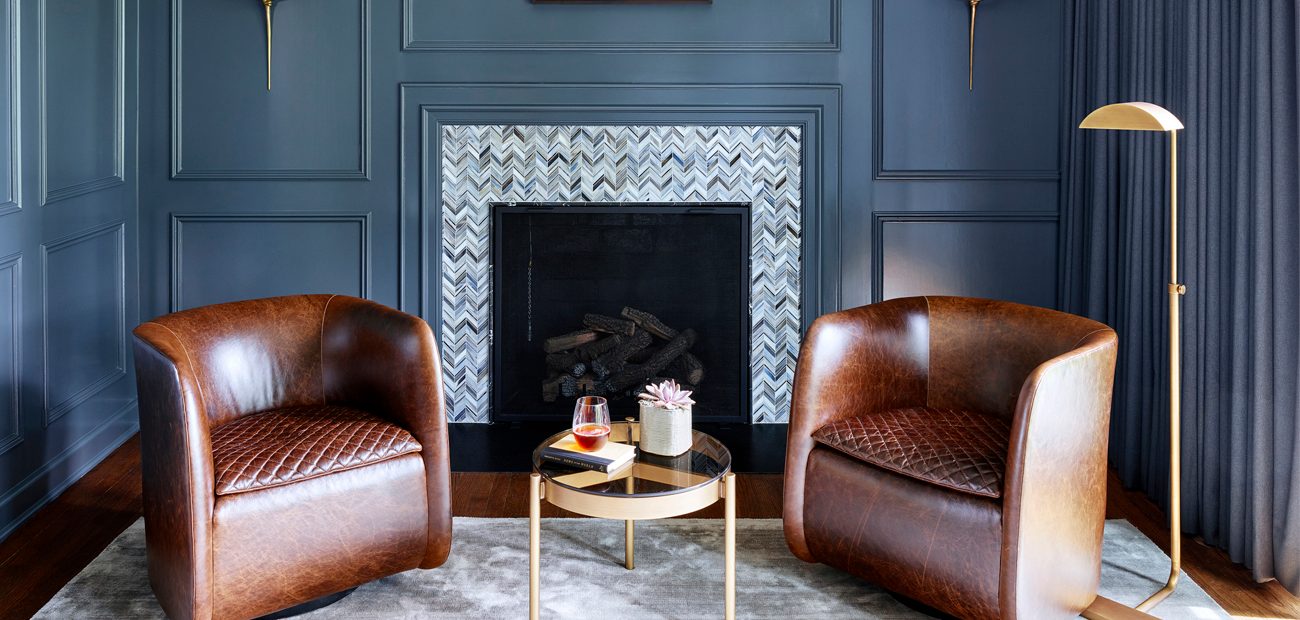
© Michael Robinson / Morgante Wilson Architects
For years, homeowners and their real estate professionals have walked a fine line between current interior trends and choosing a neutral palette that attracts the most potential buyers. If a homeowner went with rich color choices in paint and other decor, they risked paying a price at the time of resale. A glossy red dining room or purple wallpapered bedroom may even have turned away potential buyers.
But as design trends have evolved once again, that safe route of neutral beiges, grays, and whites has led to a sameness that’s a bit tiresome. When the country’s most famous color trendsetter, Pantone, and several other paint manufacturers announced that their 2020 color of the year choices were royal and navy blues, dusty pink, and multiple variations of green, many homeowners have jumped on the vibrant color bandwagon.
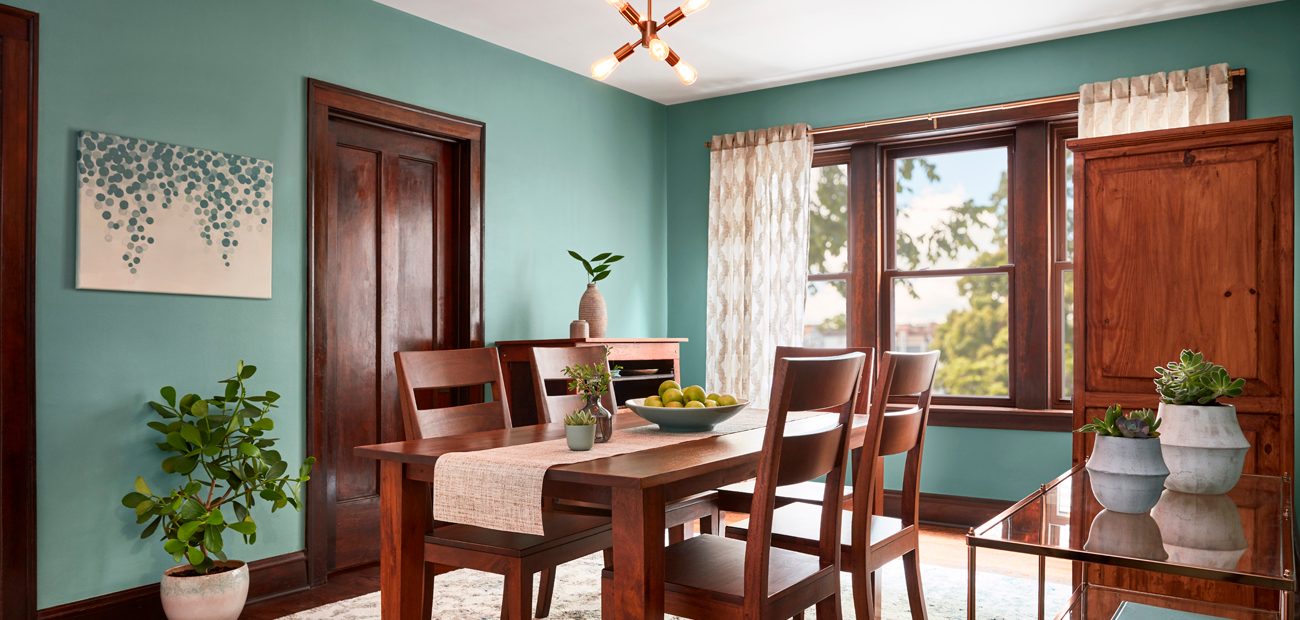
© Valspar
The choices represented a collective yearning for greater personalization happening throughout the fashion and design worlds. New York–based designer Gideon Mendelson, whose Mendelson Group is known for embracing color, recently completed a yellow kitchen for a client’s weekend home. “She’s very bubbly and energetic and likes the idea of the more colors the merrier,” he says. And Montclair, N.J., color expert Amy Wax, who helps homeowners choose palettes, finds that strong colors can make a home more memorable for its owners and would-be buyers.
Yet, a conundrum remains for those who aren’t convinced about going bold. There is still a legitimate worry that many buyers will be turned off despite the new colors’ trendiness. So, is it better to use large expanses of vibrant hues in ways that are complimentary? Or should homeowners stick with the neutrals and add a few bold accents here and there? Here are tips to help your clients navigate 2020’s complex color landscape.
What’s Trending
Homeowners should approach the new, bolder interior design colors as inspiration rather than palettes to slavishly imitate throughout a home. “The trends are more for HGTV designers and to provide ideas rather than have everyone follow them exactly,” says Mendelson.
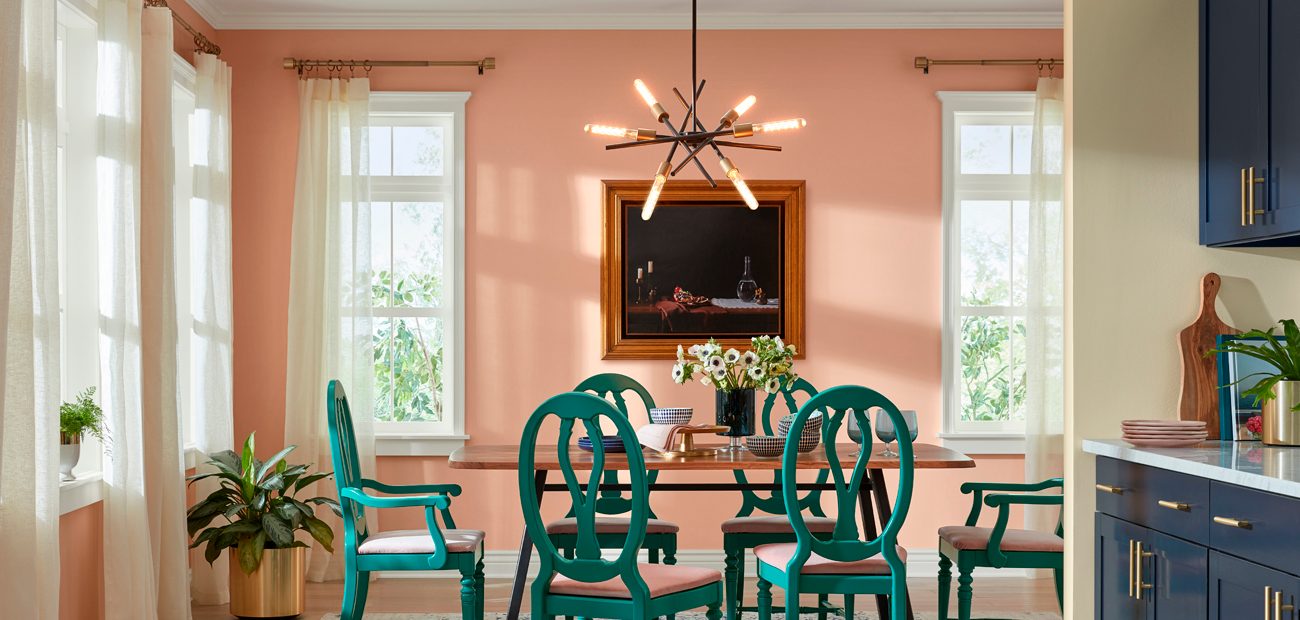
© Sherwin-Williams
Though it may seem like one color dominates each year—especially since Pantone Color Institute introduced its color of the year concept more than 20 years ago—that’s not necessarily the case. The color of the year represents a clever way to influence design choices and market paint products. After Pantone, other paint and color manufacturers hopped on the bandwagon.
This year is no different. Sherwin-Williams and Pantone each debuted deep yet different blues. Blue already has become an emerging color trend in kitchen cabinets. Colorful appliances are also growing in popularity. While they’re not replacing the more pervasive stainless steel and white appliances, more companies are offering colorful options for refrigerators, ranges, and dishwashers.
Benjamin Moore came out with a dusty rose pink color of the year, Behr and Dunn-Edwards touted greens, and Dacor took it a step further with its DacorMatch Color system, which permits homeowners to have their favorite color swatch copied for their appliances. The Big Chill, a vintage-inspired appliance company, offers a range of retro hues—think yellow, pink, and turquoise.
Neutrals Are Still Important
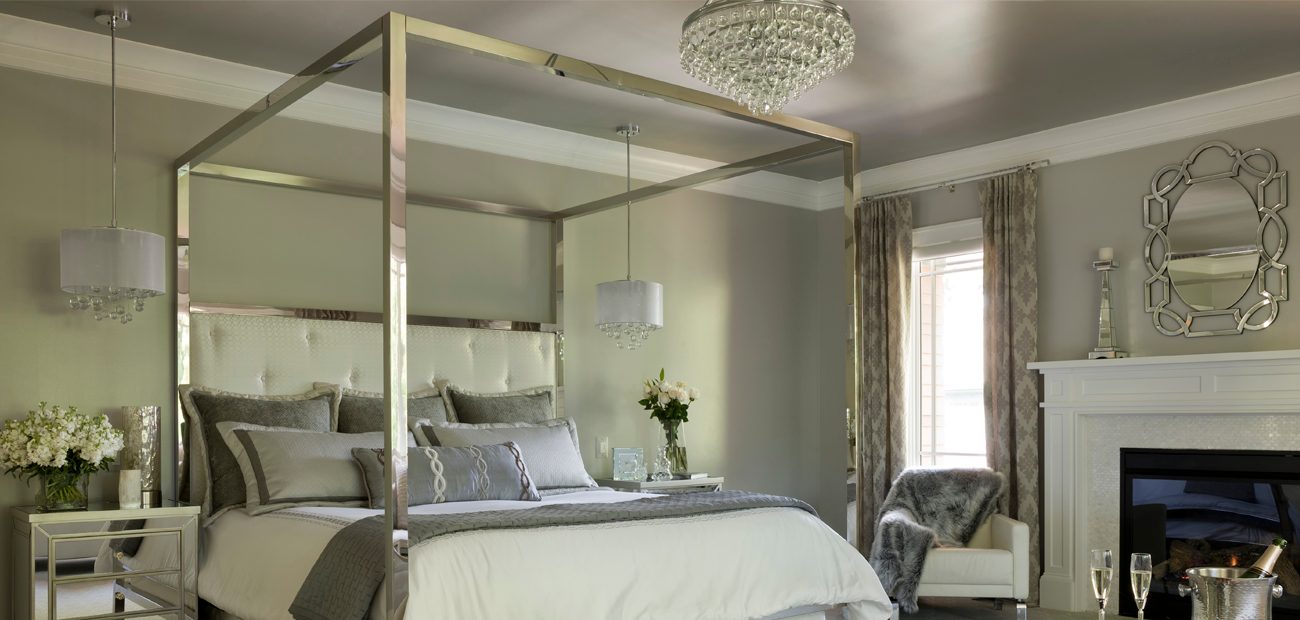
© Beall Photography / Sharon McCormick Design
While bold colors get all the buzz, grays, beiges, and whites aren’t disappearing completely. “They’re classics,” says designer and blogger Laurel Bern of Laurel Bern Interiors. Neutrals will continue to show up in interiors, especially in the kitchen, according to the 2020 Houzz Kitchen Trends Study findings. White continues to be the most popular cabinet color, followed by medium wood, then gray. And neutral grays, whites, and beiges are still highly popular on walls and throughout interiors.
Designer Sharon Gosselin McCormick of Sharon McCormick Design in Hartford, Conn., says her clients still request neutrals. And Tina Nokes, owner of Five Star Painting in Loudoun, Va., uses the new colors of the year in showhouses to educate clients about the latest trends, but most of her interior jobs involve neutral colors.
In some instances, white could be seen as one of the bold color trends of 2020. Jennifer Ames, sales agent with of Engel & Volkers in Chicago, says she’s seeing more homeowners favor white than previously. “It has a very modern, gallery-esque look and is so flexible with decorating choices,” she says. Julia Buckingham, founder of Julia Buckingham Interiors and the shop Modernique in Phoenix, concurs on white’s popularity. “It offers a blank slate and is great for all the colorful art that’s popular,” she says.
Pairing Neutrals With Bold Colors
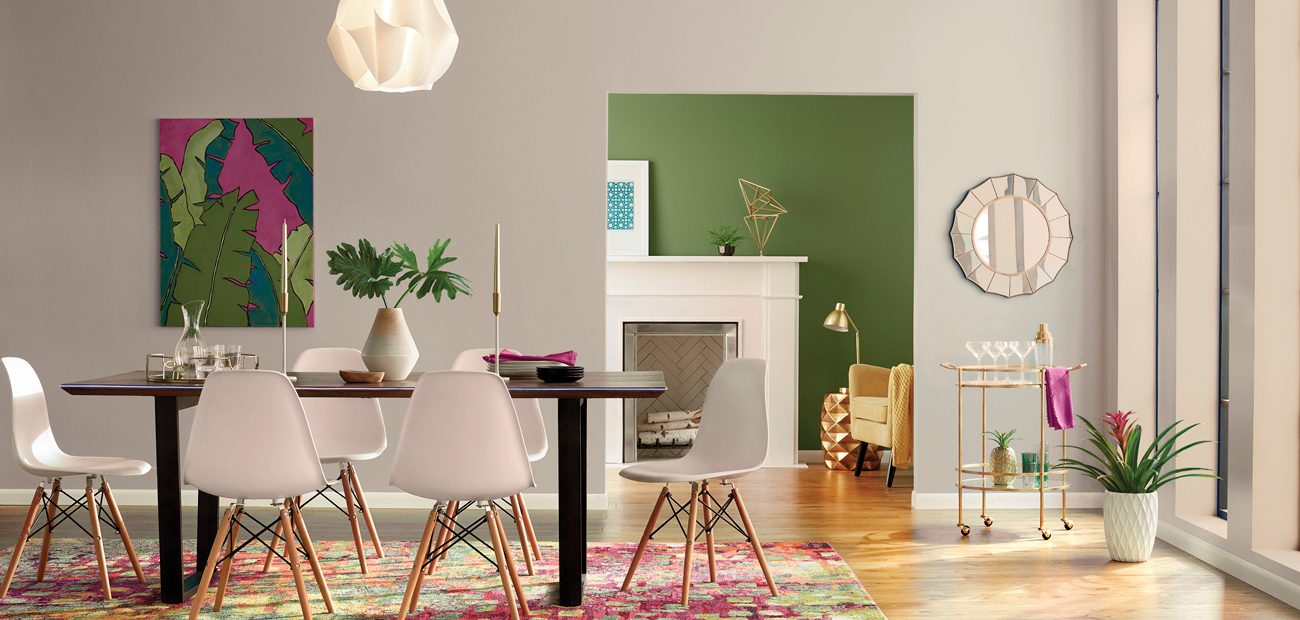
© Sherwin-Williams
The biggest takeaway from this year’s interior trends is that neutrals are more frequently being paired with pops of stronger colors. Some of the neutral paint colors even have a hint of underlying tones to offer a happy middle ground and some freshness. This is the approach that The Spruce, a home and lifestyle website out of Stroudsburg, Pa., is taking with its new interior paint line. “We think grays and beiges will always have staying power, but our paints have hints of colorful undertones,” says Melanie Berniet, the company’s general manager. “They’re less traditional than beige or gray and feel a bit more modern but aren’t too experimental.”
Valspar also went this direction with its 12 colors of the year. Inspired by nature, the palette includes an array of dusty, muted hues that are subtle and highly livable, says Sue Kim, the company’s color marketing manager.
Advise Clients to Choose What Speaks to Them
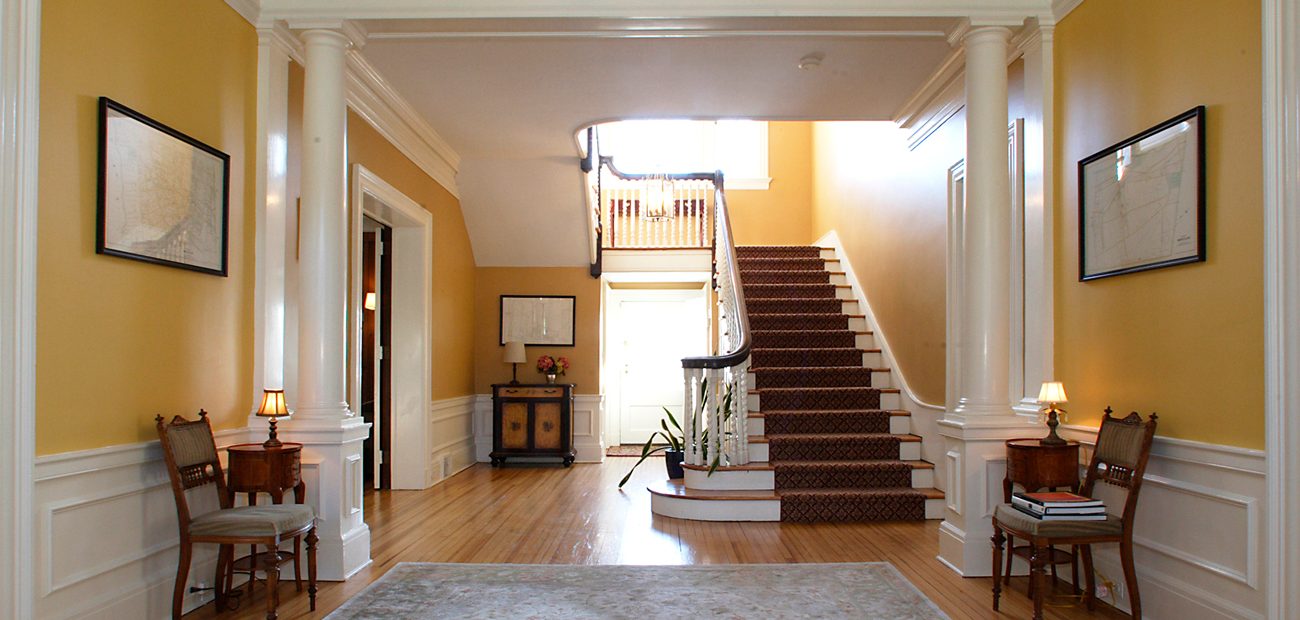
© Amy Wax
Ultimately, homeowners should go with that makes them feel good rather than what’s trending, says Chicago designer Rebecca Pogonitz of GoGo Design Group—that’s what will give their space its “soul.”
Mendelson helps his clients find the right colors by asking them a series of questions, such as, “What colors make you feel comfortable?” Bern also recommends taking the size of the room, how it’s lit, and its intended use into consideration. If the answers point toward a bolder hue, but homeowners seem hesitant, then recommend testing the waters in smaller doses.
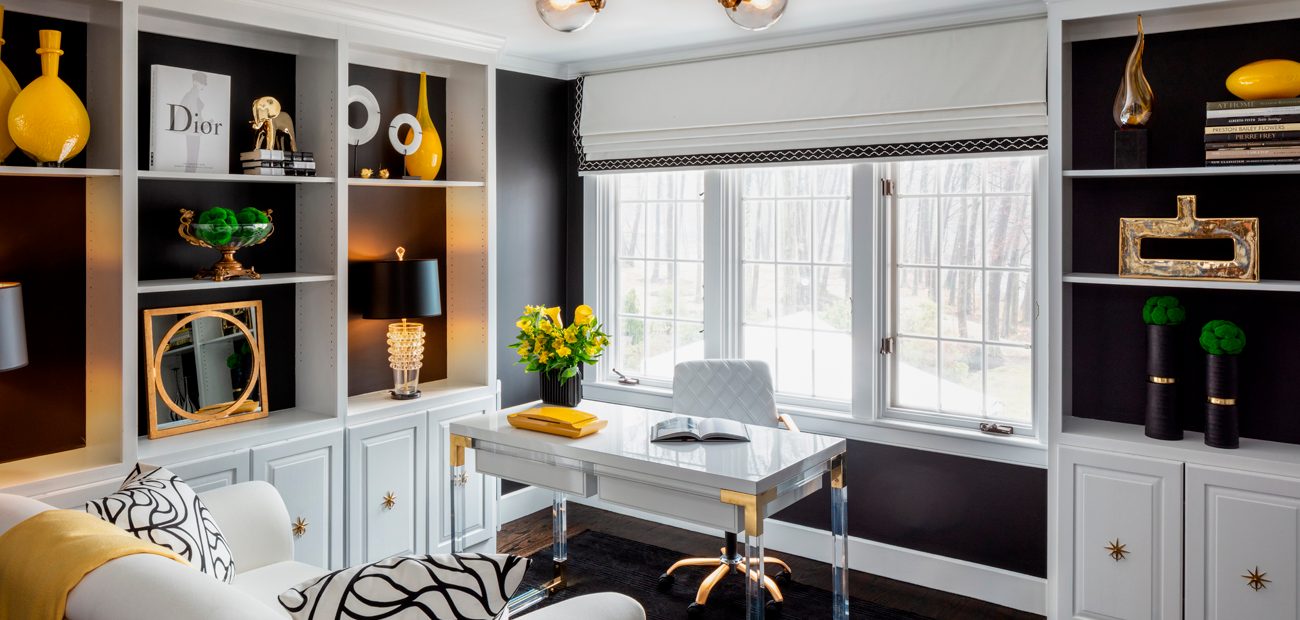
© Kyle Caldwell / Sharon McCormick Design
Elissa Morgante, co-founder of Morgante Wilson Architects in Chicago, suggests that clients initially choose just one accent wall to try a big bolder color. “Powder rooms are a fun place to experiment with an intense shade,” she says. Berliet also recommends experimenting with pops of color in heavily trafficked rooms, such as the kitchen, but in unexpected places, such as inside cabinetry and drawers.
Another way to introduce bold hues is through pillows and other soft features against a neutral background, says Kristie Barnett, founder of the Decorologist design firm in Nashville, which trains stagers and color experts. The benefit is that they’re easy to switch out.
If homeowners have their heart set on painting, they can always take one of the newer bold colors and mute it by mixing with a gray or white paint, says Mendelson. And for those confident about taking the plunge, the end results can be rewarding. “I’ve painted a few dining rooms for clients who wanted them black—another trend—and used white trim, and it turned out dramatic, crisp, and beautiful,” Nokes says.
Repaint if You Must

© Eric Piasecki / Mendelson Group
Ask your buyers how many years they plan to be in their home. While nobody knows for certain, some buyers have a rough idea. If it’s fewer than five years, and definitely less than three, they might consider using more universally appealing neutrals for walls and permanent features, such as cabinets and countertops. They can save the bolder new colors for accessories, art, or accents, “just not everywhere,” says McCormick.
For those who think they’ll stay longer and are comfortable with boldness, designers say go for it. Some homeowners even push their design experts to come up with dramatic color palettes. Beverly Kruskol, whose contractor firm M.Y. Pacific Building Inc. in Tarzana, Calif., was surprised but delighted to help one client gain the scarlet apple red and bubble gum pink rooms she wanted. Eight years later, she still loves them, Kruskol says.
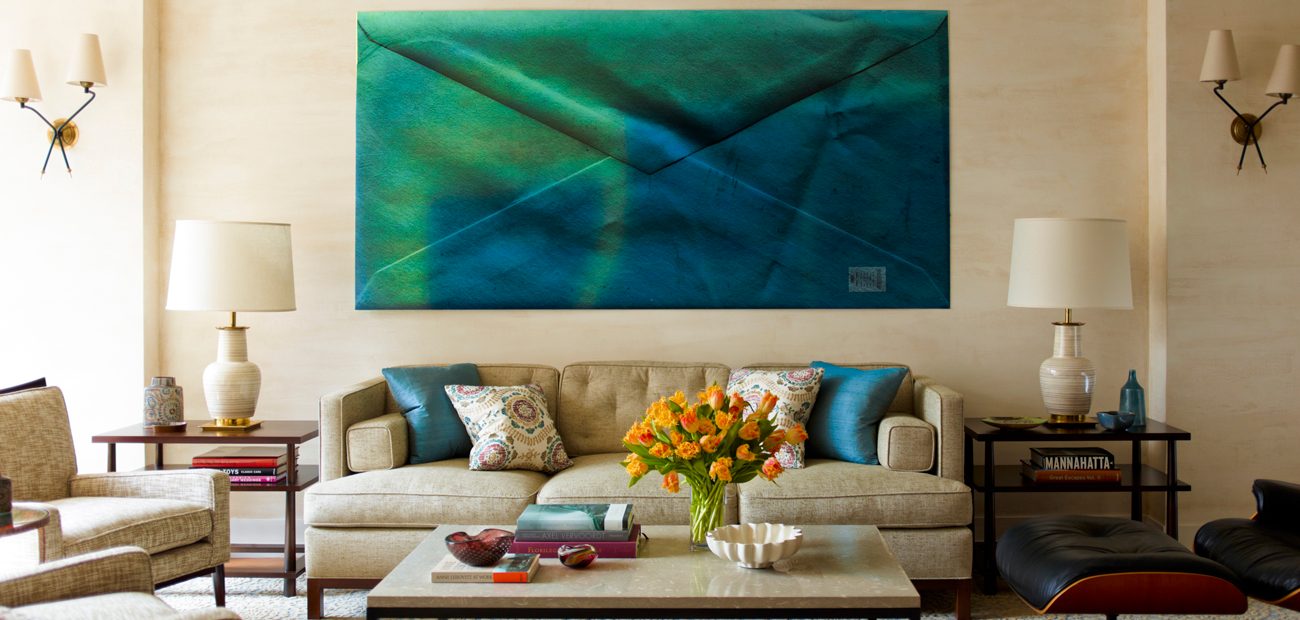
© Eric Piasecki / Mendelson Group
But, as Stephanie Mallios, a real estate salesperson with Coldwell Banker Residential Brokerage in Short Hills, N.J., points out, homeowners should understand that their overly vibrant color choices may still turn off buyers. Mallios still recommends repainting the strongest colors before listing. Her favorites are Benjamin Moore beiges such as Calm, Opulence, and Mayonnaise—all very soft.
Kruskol says the light in the room can affect the color. While a bold color may look beautiful in person, it may not photograph well. And today’s buyers are shopping for homes on their phones first, so sellers only have a split second to show off interiors. The wrong color can deter someone from checking out the property in person.
“Having these color conversations is good,” Buckingham says. By sharing options with clients, real estate professionals will expand their horizons and help owners choose the right hues for their home or listing.
Testing Paint Choices
Choosing an exact hue is challenging because so many color variations exist. Even whites range from warm to cool and have countless undertones. Paint pros have long recommended trying colors out by first buying small paint pots and testing swatches on a wall. A room’s natural light, its artificial light, the color of its furnishings, and the paint’s level of sheen will all affect how the color appears.
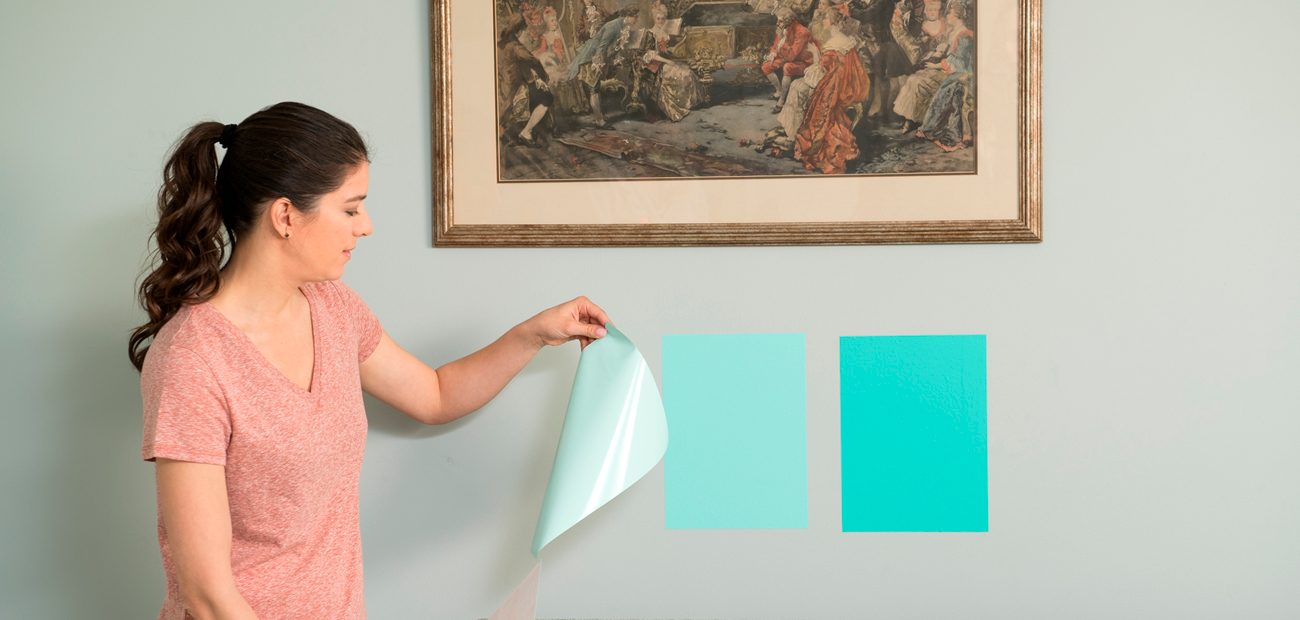
© SureSwatch
But small swatches don’t always provide an accurate gauge. So, some companies now offer large peel and stick swatches that can be applied to the wall and easily be removed. Samplize is a company that offers 8-inch square paint samples with colors from four major manufactures—Sherwin-Williams, Benjamin Moore, Farrow & Ball, and select PPG/Behr hues. Homeowners can buy them online or in several retail locations for $5.95 each. SureSwatch makes paintable 9-by-12-inch clear films that homeowners can paint with their preferred color. Jamie Peltz, who developed the product, says it gives a more accurate color assessment than applying paint on top of another color on the wall. After the paint dries, a homeowner attaches the film to a wall. The adhesive doesn’t cause damage. Packs of three films are available for $2.94 at Home Depot and select hardware stores.
What’s Trending Next? A Dozen Home and Design Ideas for 2020
What’s Trending Next? A Dozen Home and Design Ideas for 2020
From building and decorating materials to room sizes, colors, and lighting, gift your clients with the knowledge gleaned from crystal ball gazers as we look ahead to 2020’s trends.
Almost everyone enjoys making predictions for a new year—and certainly for a new decade. How about cooking appliances that tell you how to roast and broil to perfection? Or, better yet, new homes that come with a personal chef?
REALTOR® Magazine asked our favorite real estate trend watchers and influencers what to expect in 2020 and beyond. For starters, most agree that gray is on its way out, while deep hues are becoming the stars in interior paint. And more homeowners are following the craze of decluttering and tidying up popularized by Marie Kondo so they can focus on experiencing joy in their home.
While some fads are natural evolutions and others are more far-fetched, we’ve whittled it down to a dozen that are sure to inspire your buyers and sellers alike. Plus, don’t miss five up-and-coming kitchen trends that are bound to spark interest and maybe a remodel.
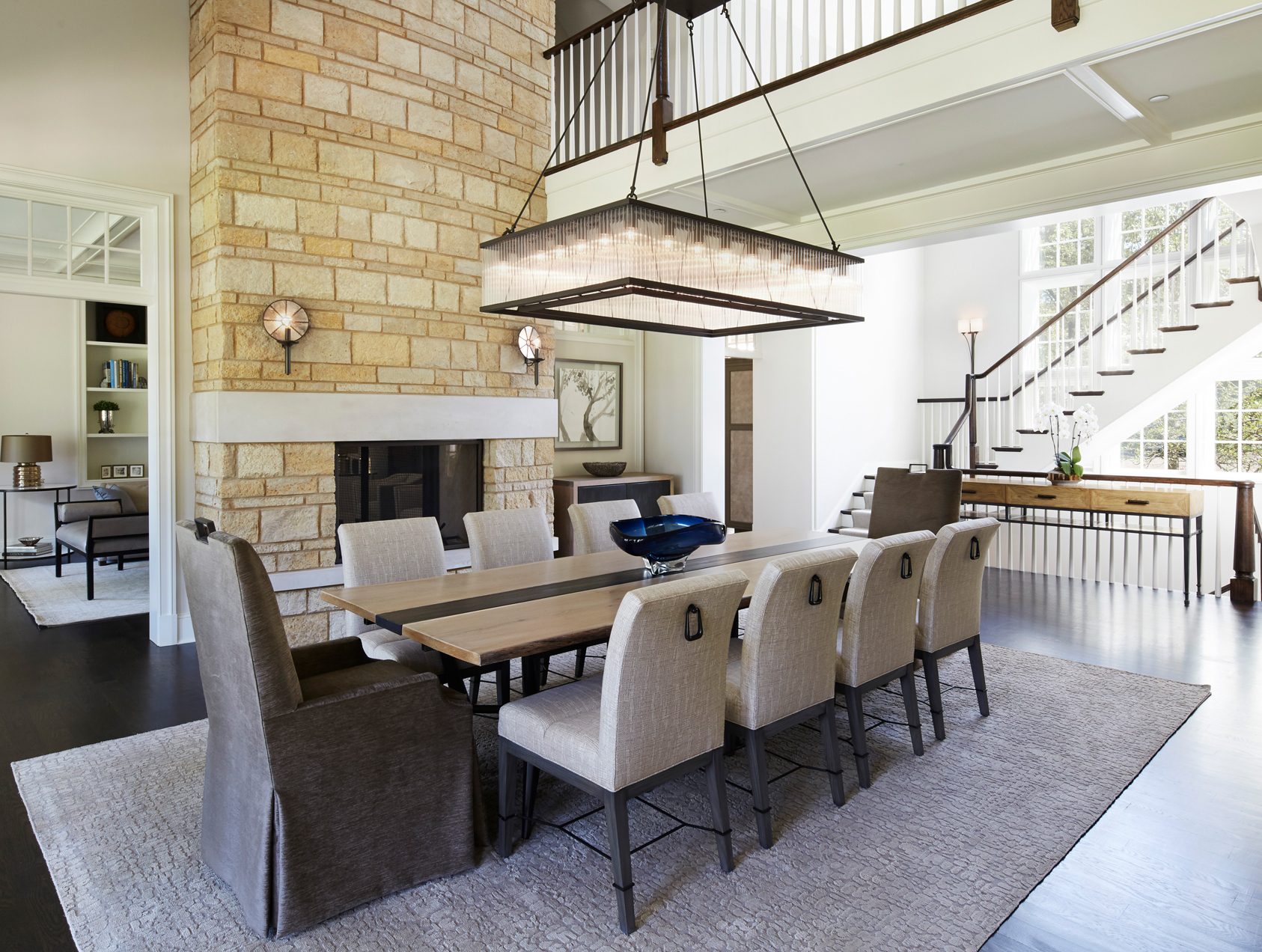
© Morgante-Wilson, Werner Straube Photography
1. Comfortable Dining Rooms
Homeowners have decided they don’t want to give up their dining rooms—that’s in the past. Now they want dining rooms to be less formal and more functional, says architect Elisa Morgante of Morgante-Wilson in Chicago. The best way to do this is by investing in a multipurpose table that can take wear and tear, comfy chairs with high backs and armrests, and washable fabrics. Fun light fixtures are replacing delicate ones, and some traditional dining room furnishings are disappearing—such as china cabinets used for fancy entertaining, says real estate broker Jennifer Ames, partner at Engel & Volkers in Chicago.
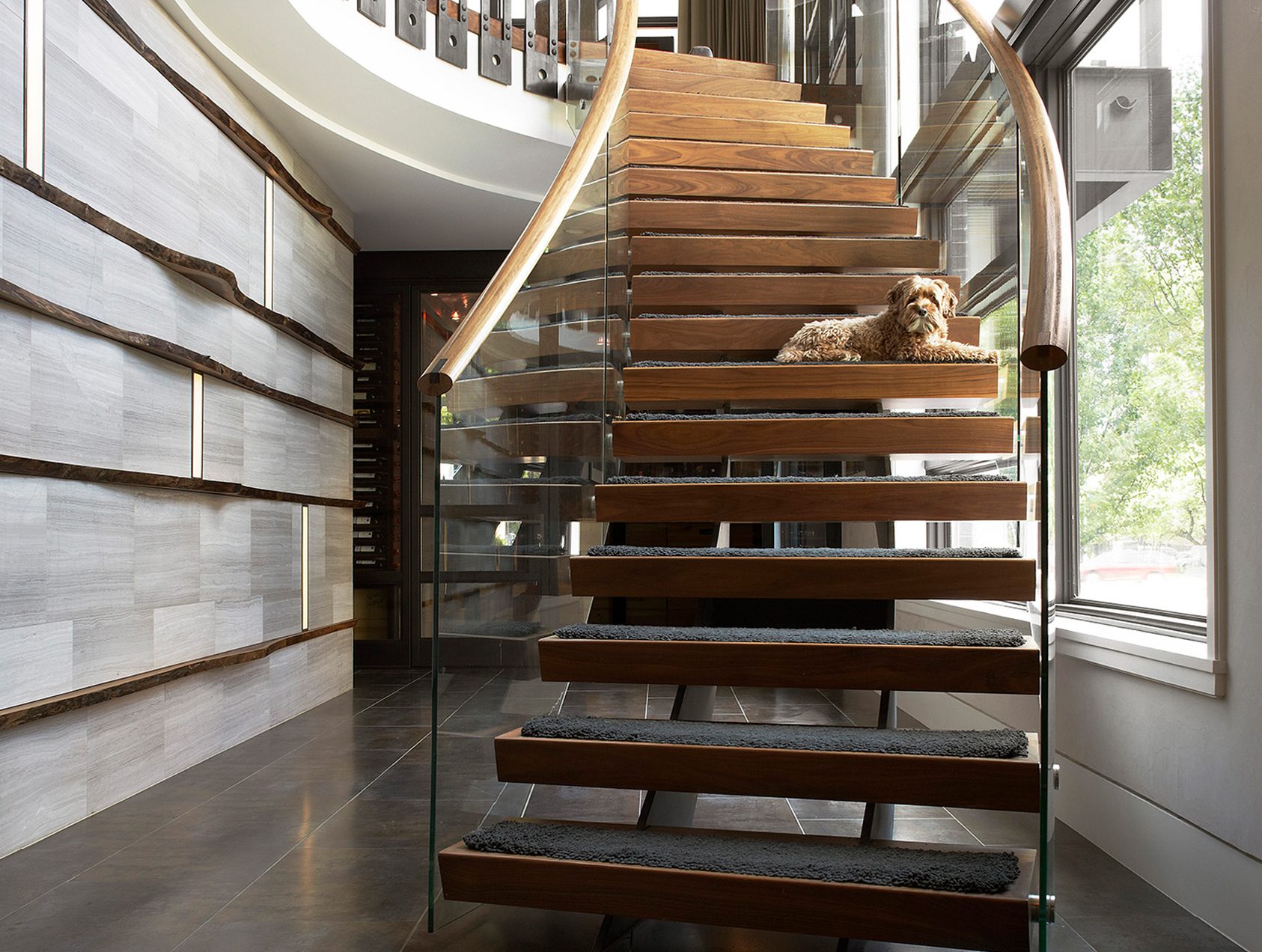
© Morgante-Wilson, Werner Straube Photography
2. Fabulous Foyers
Homeowners know the importance of exterior curb appeal, but now they’re taking advantage of the foyer as another opportunity to impress, says Liz Brooks, vice president of sales and marketing for Belgravia Group, a development firm in Chicago. At Belgravia’s condo building Renelle on the River, foyers are “gracious” in size with walls to hang a mirror or art or offer views through to a living room and beyond. The architects at Morgante-Wilson like foyers in multilevel homes to incorporate a dramatic stairway with wider or more curved treads, risers, and railings fabricated from novel materials. Some include a clerestory or skylight at the top to flood the area with light, says Morgante.

© Joaquin Corbalan – AdobeStock
3. Mass Timber
Mass timber is beginning to receive recognition as a smart building material because its production generates less carbon emission than steel or concrete, says sustainable architect Nathan Kipnis of Kipnis Architecture + Planning in Evanston, Ill. The material is also fire-resistant and strong and performs well during seismic activity, according to the Mass Timber Code Coalition. Plus, it’s cost-efficient and can be constructed faster since it’s prefabricated, and it can be used on walls, floors, and roofs—even in innovative sculptural forms. “With mass timber, there’s no waste on a site that must go into a landfill,” says Sam Ebersol, general manager of Mid-Atlantic Timber Frames, a heavy timber construction company in Paradise, Penn.
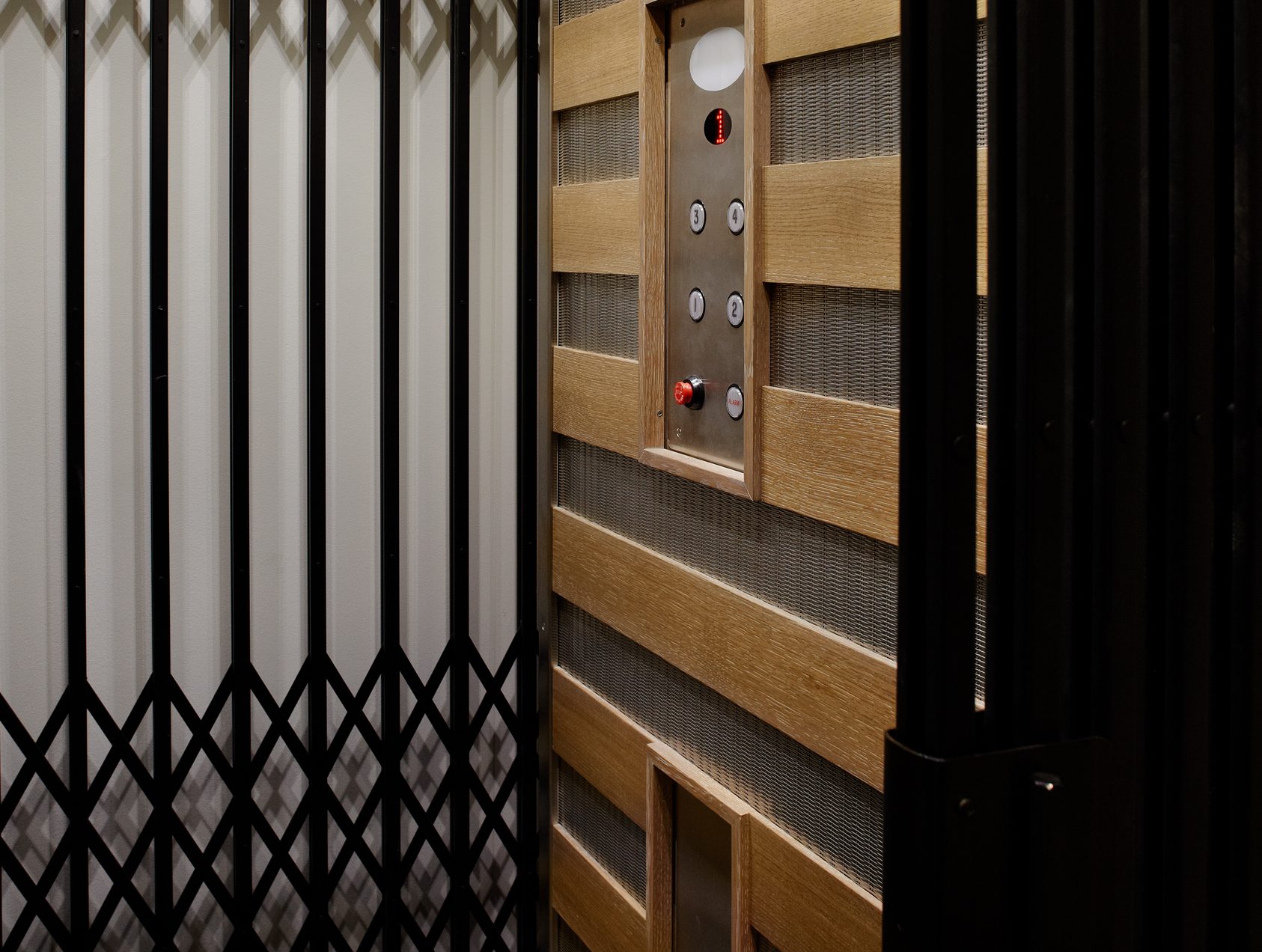
© Morgante-Wilson, Werner Straube Photography
4. Home Elevators
As the baby boomer population ages, first-floor master bedroom suites are becoming more popular. But not every house or townhome provides space to include them. In cases where a home has multiple levels, an elevator provides help for those who have trouble climbing stairs, says Kipnis. He recommends building the feature in new homes, or at least leaving adequate space—3 1/2 feet by 4 1/2 feet on each level for future installation. The cost will vary depending on materials, finishes, and an electrician’s hourly labor charge, but the total expense might run about $15,000 per floor.
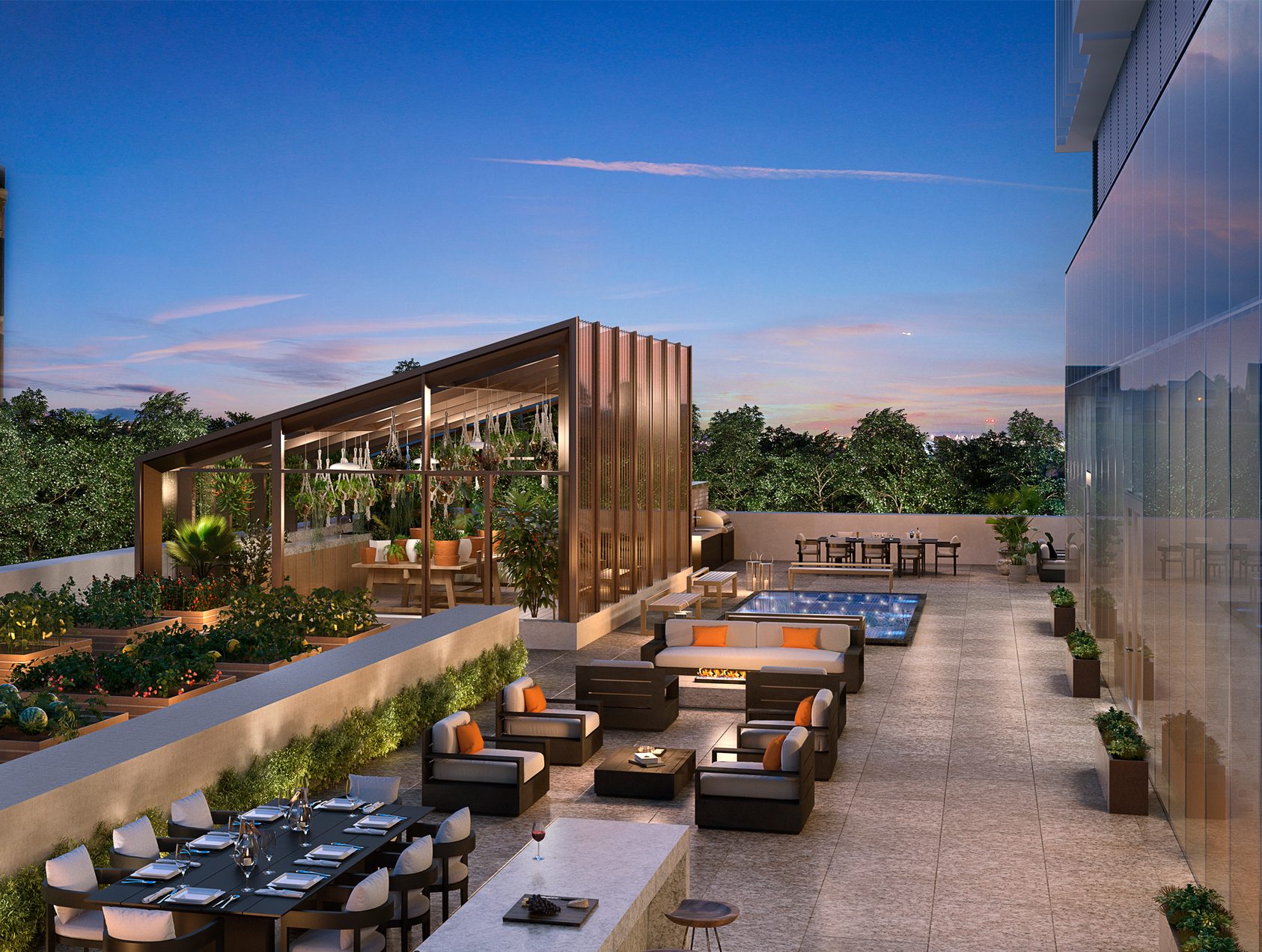
© ARX Solutions, Dranoff Properties
5. Communal Oases
Developers of multifamily buildings now recognize that homeowners want a green space to garden, even after they’ve vacated suburban homes. And while rooftop gardens have become more prevalent, other green spaces are popping up, too, as more developers note their health benefits. Carl Dranoff, founder of Dranoff Properties based in Philadelphia, planted a two-level garden at his newest project, Arthaus Condominiums in downtown Philly, which will include a greenhouse to grow orchids, outdoor plots to raise vegetables, flowers, and herbs, and an extended lawn off a communal event space. A horticulturalist will offer residents professional expertise. The architecture and interior design firm CetraRuddy in New York has focused on adding greenery in another way—through large terraces that bring more light and air and a sense of space into the interior of its ARO building in Manhattan, as well as its surrounding block. Such tactics are more important in denser urban environments, say the building’s principals, Nancy Ruddy and John Cetra.
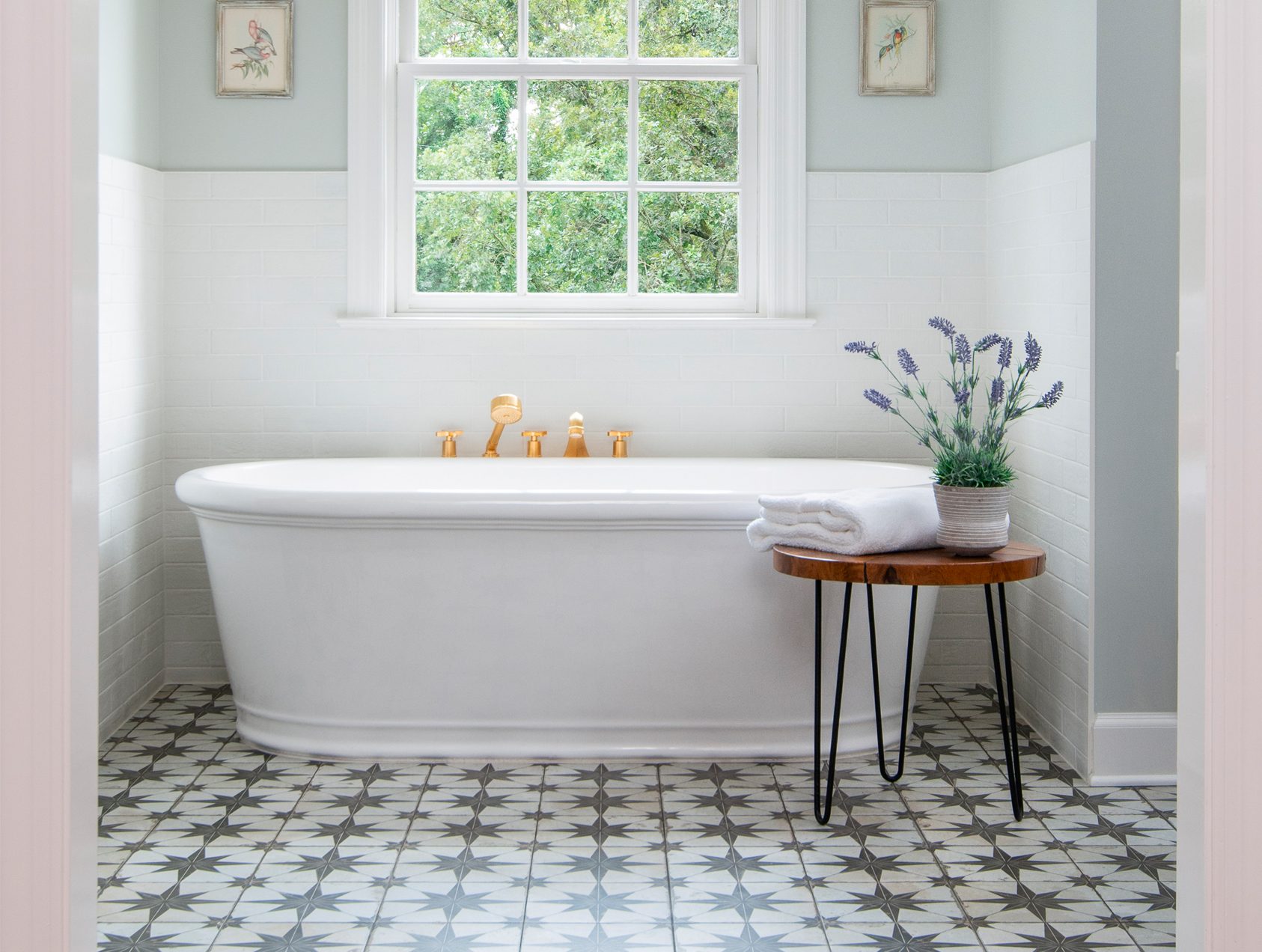
© Kristie Barnett, The Decorologist
6. Graphic Bathroom Floors
Boldly patterned floors are adding a spark of interest in bathrooms that were recently trending very monochromatic and spa-like. Staging and design expert Kristie Barnett, aka The Decorologist, in Nashville, took this approach in one client’s homes. She used an encaustic, graphic floor tile, similar to those that show up along kitchen backsplashes. But Barnett adds one caveat for bathrooms: “When choosing this kind of pattern, it should be the lead actor in the show while other elements play supporting roles. A bathroom should still be a personal sanctuary, and too much visual noise could weary the eye.”

© Renovation Sells
7. Remodeling Before Listing
Many homeowners don’t want to take on the work and extra cost of fixing up their home before they list. Yet many buyers don’t want to invest in a home where they know there are walls to paint, countertops to replace, and floors to resand. Consider the latest trend that helps remove buyer objections: a contractor who tackles the work and fronts the cost or who partners with a firm that provides financing. Sellers then pay back the funds at closing. The big reward usually is a higher price and speedier sale, says Mike Valente, a licensed general contractor who works with many homeowners through his Renovation Sells firm in Chicago. Compass, a national real estate firm, has established its Compass Concierge service to deliver a similar revamp option. A calculator on the company’s website helps suggests how much sellers might spend.
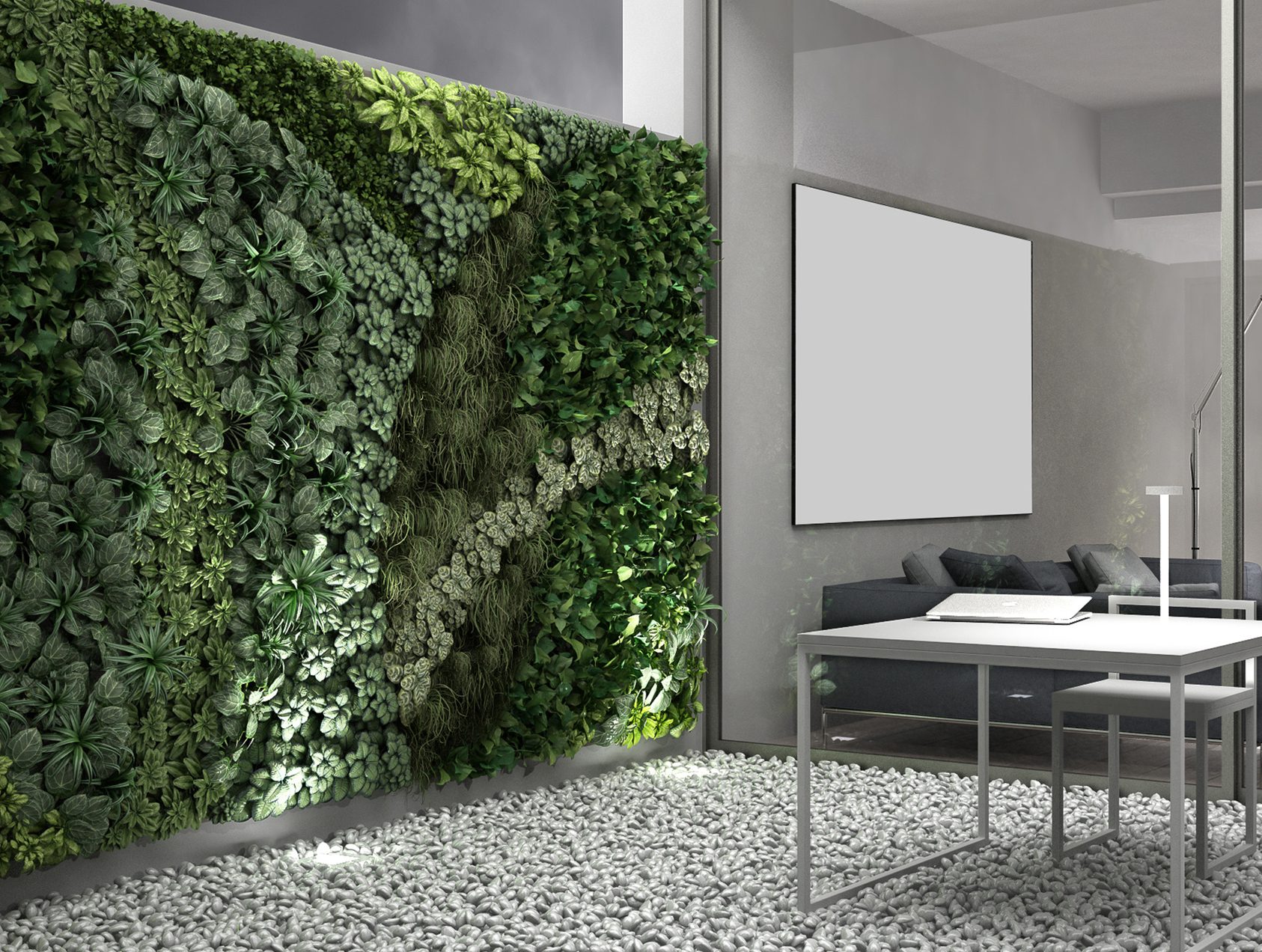
© ArchiVIZ – AdobeStock
8. Living Walls
For homeowners downsizing to a property with a smaller yard—or for those who have trouble bending down—living walls offer a way to connect to greenery by growing plants, vegetables, and herbs along the walls of a home, garage, or outbuilding. Landscape designer Michael Glassman of Michael Glassman & Associates in Sacramento, Calif., says, “Gardening is going up rather than out for aesthetics and consumption.” He recommends vines like star jasmine and creeping fig, edibles such as tomatoes and cucumbers, and herbs like rosemary and basil. “Plant walls” resembling art are also showing up inside, especially when homeowners don’t have an outdoor space, says David Dynega, CEO of Detail Renovations in Great Neck, N.Y.
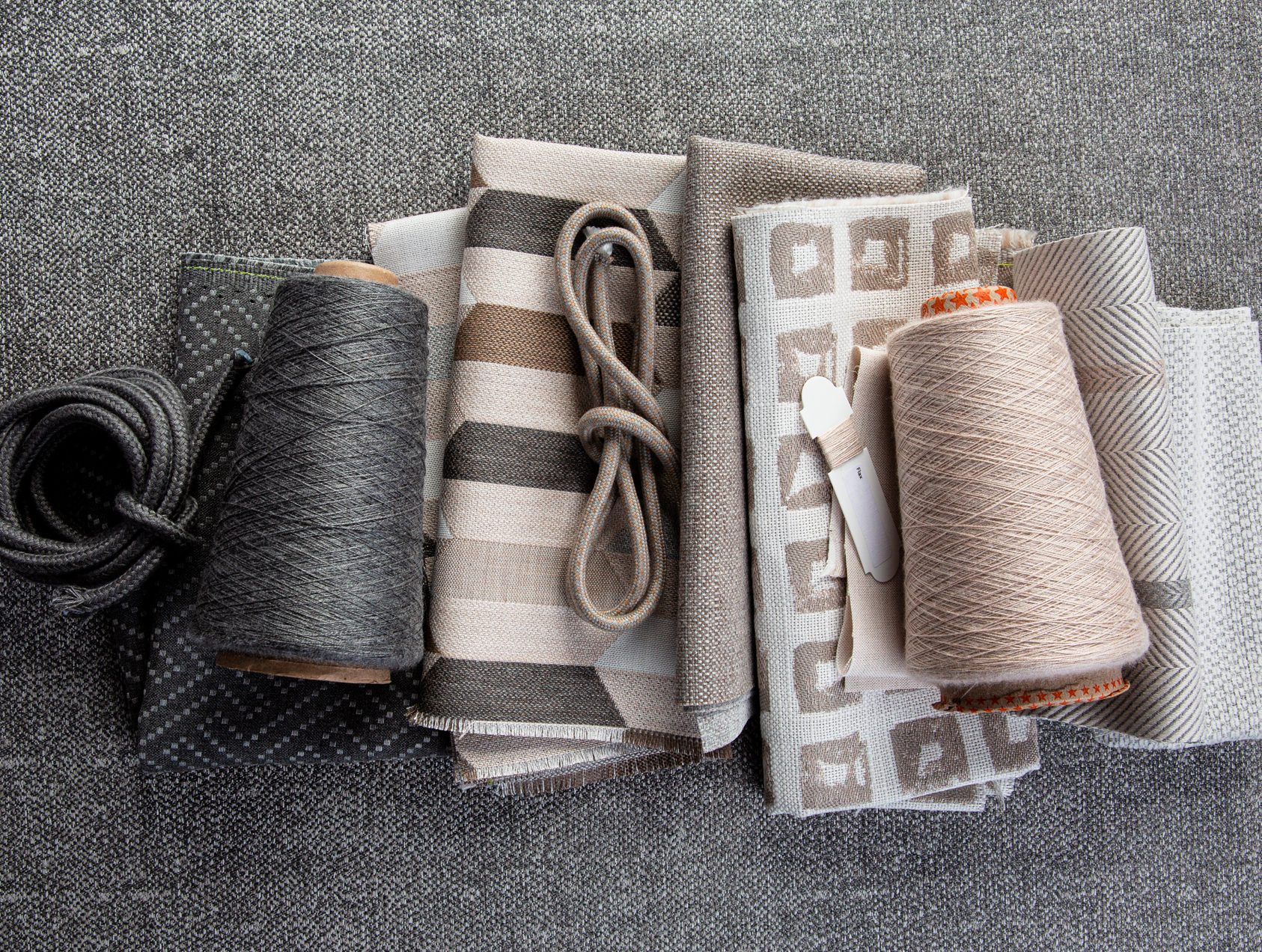
© Sunbrella®
9. Better Looking Performance Fabrics
Instead of looking only at fabrics that appeal for color, pattern, or texture, homeowners want materials that will last and perform—hence, the name they’ve earned: performance fabrics. Originally, they were designed for outdoor spaces, where the sun, wind, water, or inclement weather took their toll. But as the fabrics have become more attractive, designers and homeowners have started using them indoors, where they can withstand the wear and tear of pets and people, says Chicago designer Rebecca Pogonitz of GOGO Design Group, who’s a big fan of the trend. Greg Voorhis, executive design director of Sunbrella, well-known for its performance fabric designs, says his firm is seeing the rise of more textured chenilles, boucles, and chunky wovens. “They bring new energy into familiar spaces without sacrificing comfort or durability,” he says.
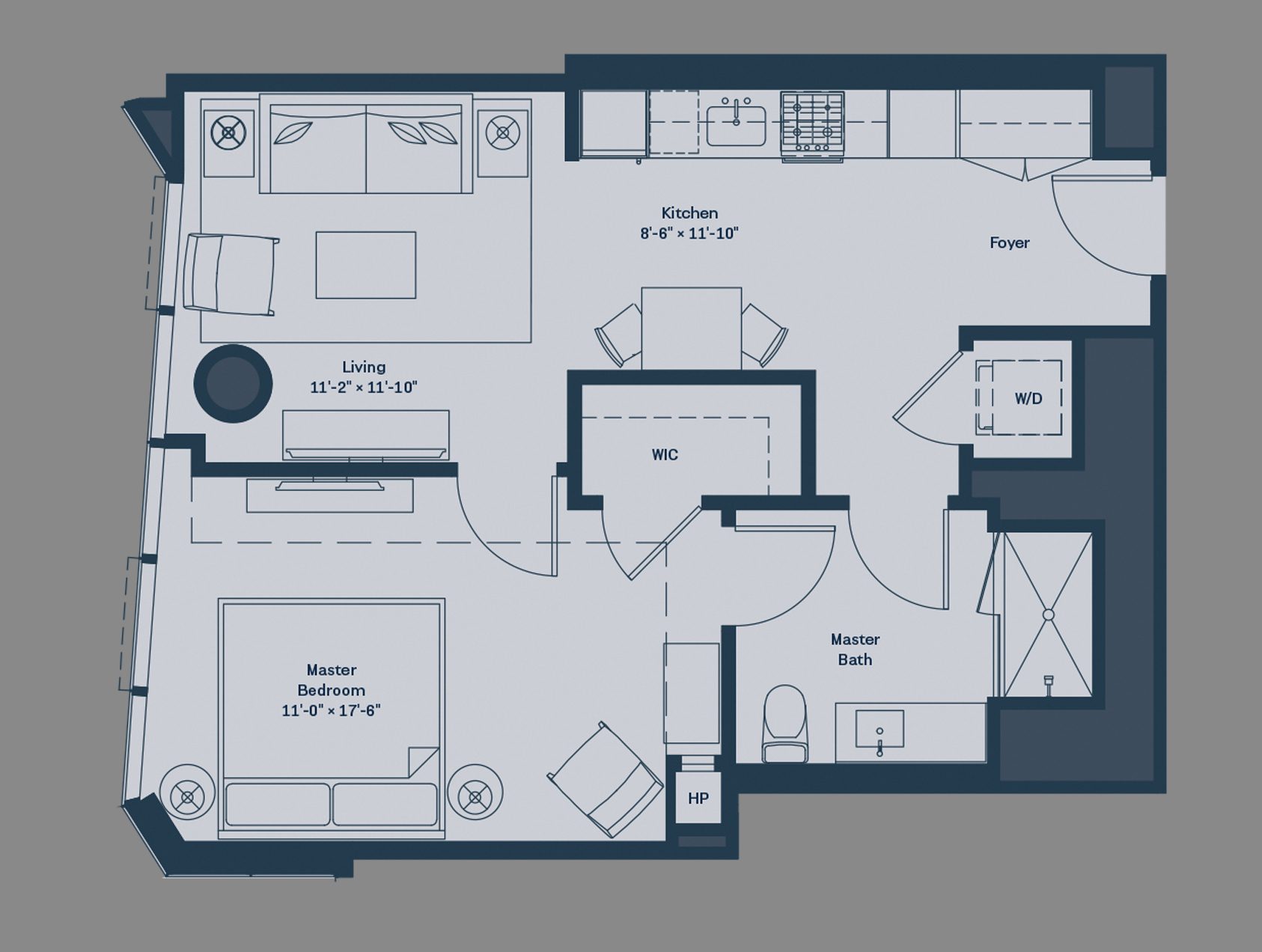
© Lendlease
10. Downsizing Homes, Rooms, and Ornate Features
The McMansion craze has been dead for years, resulting in more homeowners looking to downsize and millennials never planning to go big. “They favor experiences over owning large high-maintenance, high-cost homes filled with lots of stuff,” says Ames. “It’s the Marie Kondo version of shedding stuff.” Many home shoppers are also looking for simpler architectural detailing that pares maintenance and cost, as well as fewer rooms that will go unused, Ames says. Lendlease, a development company that created the new Cirrus building in downtown Chicago, heeded this mantra when it planned its range of scaled-down units and beefed up its many shared amenity spaces, says Ted Weldon, executive general manager. Sheri Koones’ new book, Downsize: Living Large in a Small House (The Taunton Press, 2019), offers an abundance of information for homeowners looking to pare down
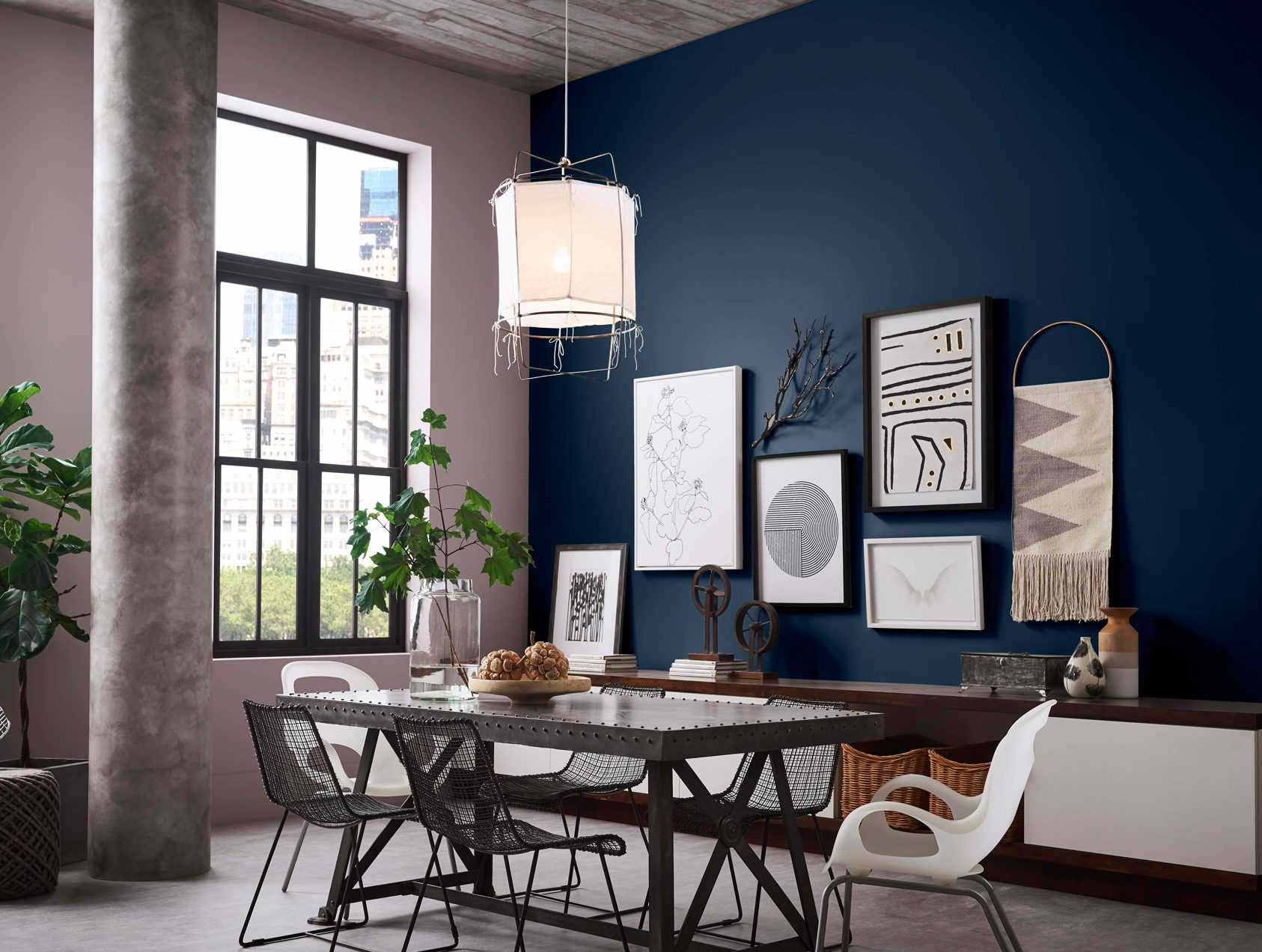
© Sherwin-Williams
11. Deeper Hues
You can read into the emerging palette of deep hues a desire to counter global unrest, as some designers speculate, or you can take the colors as an antidote to years of pale grays. Either way, the darker hues are coming on strong. Pantone anointed “classic blue”—a very royal tone—as its color of the year. Could it be a nod to the Sussexes or appeal of The Crown? Sherwin-Williams’ Sue Wadden, director of color marketing, touts her company’s “naval” (SW 6244), “anchors aweigh” (SW 9179), “ripe olive” (SW 6209), and “dard hunter green” (SW 0041) as choices to visually mitigate stress. Another emerging trend: monochromatic rooms, donning a single paint color on the walls, trim, and ceiling.
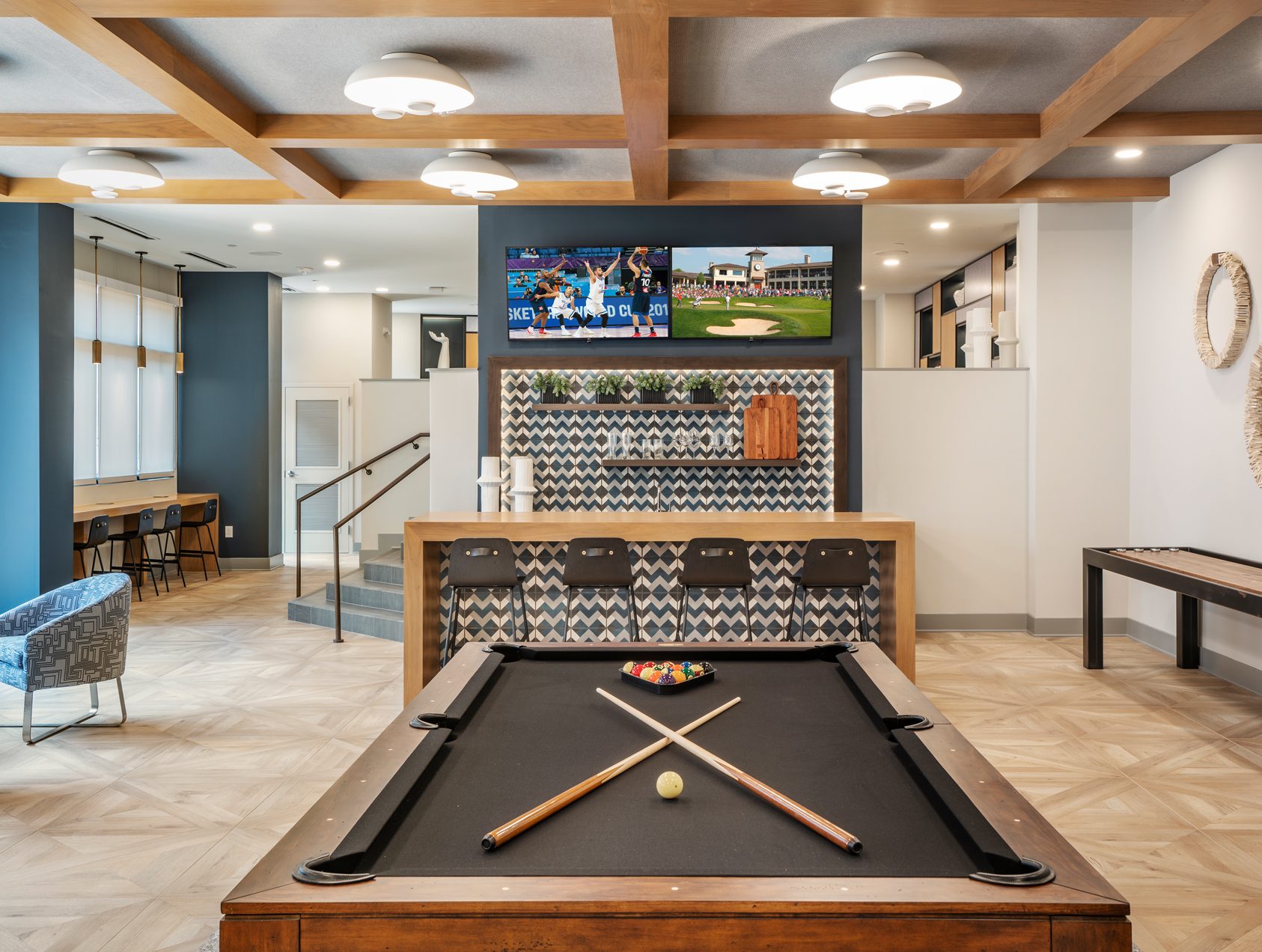
© Mary Cook Associates, Toll Brothers Apartment Living
12. Hipsturbia
Live/work/play has become a way of life for millennials who aren’t willing to compromise when they have children. As they move to the suburbs for more space, they choose communities with urban amenities—thriving walkable downtowns with dining, shopping, entertainment, public transportation, and jobs. “Success has a way of spreading,” the Urban Land Institute noted when it coined the term “hipsturbia” in its Emerging Trends in Real Estate 2020 report, says Mary Cook, founder of Chicago-based Mary Cook Associates. “Every development we work on today is located in areas that fit this formula and foster community interactions,” she says. One example is Toll Brothers’ Apartment Living Oleander building outside Atlanta, which offers residents flexible community spaces equipped with state-of-the-art technology to accommodate events, co-working spaces, and more. The building sits on Emory University’s expanding Executive Park campus near new medical complexes designed to attract health care professionals.
Top 5 Kitchen Trends
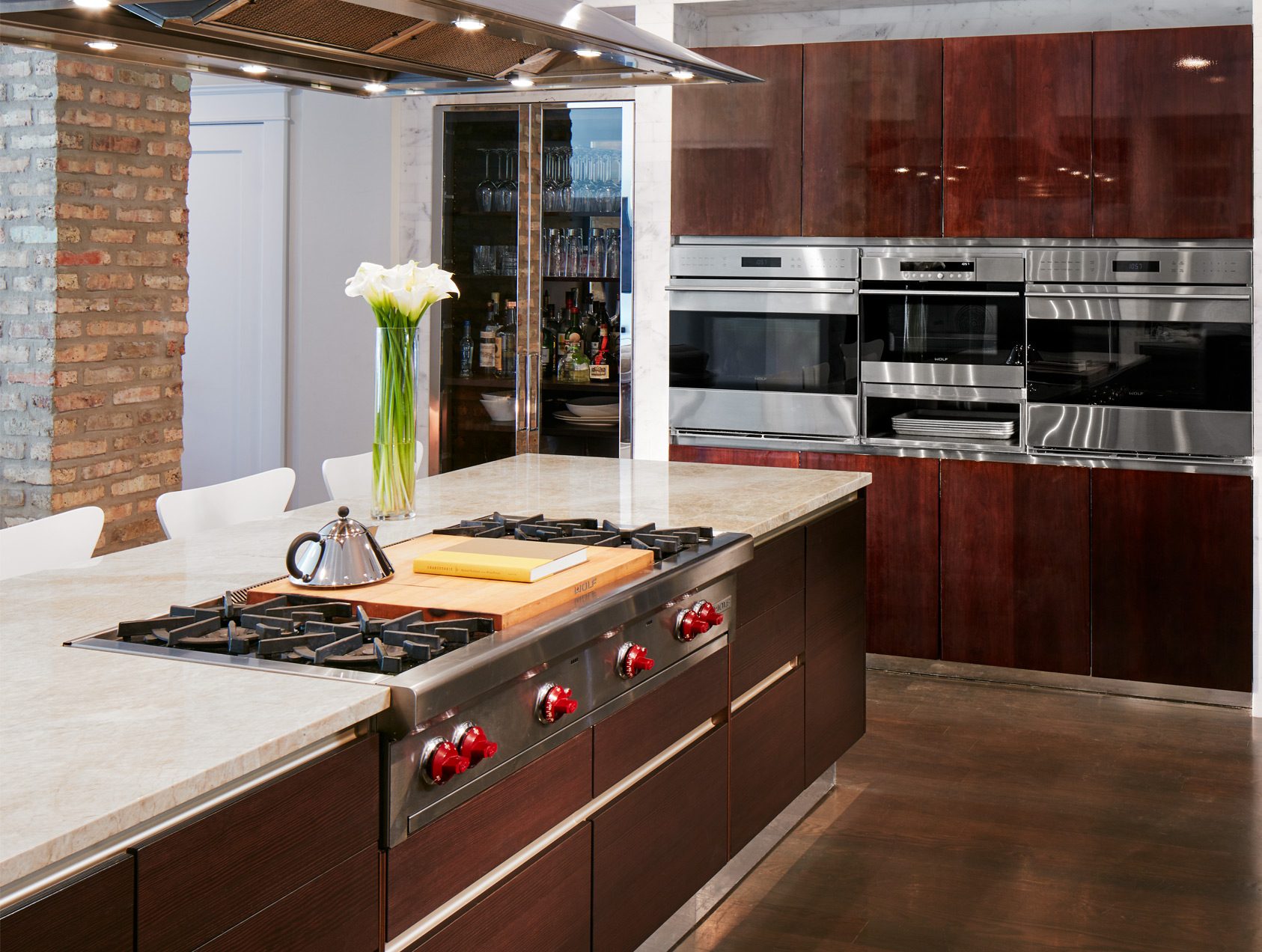
© Dave Burk, de Giulio Kitchen Design
Instead of adding a 13th trend to the list, we decided to give kitchens their own section because they remain the number one focus in the home. The new fads being cooked up are giving this room an update in style, appliances, materials, and colors, as well as a way to enhance surrounding spaces since many are part of the open plan living-dining-kitchen area. While white may still dominate cabinets and countertops, other colors and materials are popping up—so are new technologies that help homeowners prepare food more effortlessly and healthily. Here are five kitchen trends to watch in 2020.
- Materials. GE appliances are showing an uptick in more white and black matte finishes as well as a new look of glass-covered stainless steel fronts that’s emerging. These new materials fit in better with other room furnishings, too, says Marc Hottenroth, executive director of GE’s industrial design division. Also showing up in kitchens is a greater mix of metals, such as brushed bronze and copper to help freshen appliances, which generally last about 10 years.
- Technology. Voice assistants now read recipes and cooking directions for homeowners so they don’t have to turn cookbook pages with flour-coated fingers. Appliances with gourmet guided cooking technology provide recipes and tutorials through an app that communicates with the appliance via Bluetooth. The chef no longer has to turn knobs to adjust temperatures. For instance, a rack of lamb might be roasted, then finished with a broil, which would all be adjusted automatically. And a new wall oven with hot air-fry capability is offering a healthier alternative to deep frying.
- Function. A new kitchen island is emerging, which combines an island with a dinette, according to Gena Kirk, vice president of design at KB Home, a national home builder based in Los Angeles. The island features a place to prepare meals at one height and an additional countertop that slides out at a lower level for people to eat around when desired. Scaled-down appliance sizes are becoming popular in smaller open-plan homes and condos. In its new Cirrus building, a 47-story tower going up on Lake Michigan, Lendlease camouflaged appliances behind millwork paneling, says Linda Kozloski, creative design director. The company also went with smaller, more European-size appliance choices because of the units’ smaller sizes, which helps counter rising construction costs. Example: a 24-inch-wide refrigerator was selected instead of a 48-inch model.
- Workspace. After so much buzz about whether to stay with granite or switch to quartz or quartzite, KB Home offers another idea: natural wood cutting boards for a portion of the countertop surface. The wood area provides a convenient workspace without having to pull out a cutting board or leave one out all the time.
- Details. Chicago kitchen designer Mick De Giulio, principal of de Giulio Kitchen Design, is introducing design character in novel ways to surprise and contradict. One example includes the hand-hammered finish on a stainless steel Bacifiore sink to add sophisticated sparkle instead of a plain-Jane stainless or ceramic white model. Another is the instillation of polished stainless steel toe kicks at the bottom of cabinets that hardly show the dirt, scuffs, or mess that painted wood ones do.
Trends are meant to inspire rather than make agents and their clients feel the need to rush into a renovation to make a house hip or more marketable than another. These points represent what’s new or coming through the pike. In the future, for example, there may be more technology that will warn homeowners about natural disasters before they occur. And before clients invests in any updates, make it clear that it’s best to do so for personal enjoyment rather than to boost salability.
Trend to Watch: Car Charging Stations
The jury may still be out when it comes to electric car charging stations at home. They’ve become a popular amenity at multifamily buildings, and now some single-family homeowners who have invested in electric cars to shrink their carbon footprint are seeing the wisdom of installing charging stations in their garages, says architect Nathan Kipnis of Kipnis Architecture + Planning in Evanston, Ill. The cost is relatively modest, perhaps $500 for the charging box and an electrician’s hourly charge to bring a 220-volt line into the garage. The outlet is best installed on the side of the garage where a homeowner plans to park their vehicle to avoid stepping over a cord, he says. But not everyone is convinced that it’s a huge trend. According to a recent survey from Erie Insurance, only 6% of respondents said they would want one, 55% would not, and 39% took a noncommittal stand and said they might. Sounds like a trend definitely to watch.
Why Are Homeowners Removing the Fireplace?
December 17, 2019
Some homeowners are viewing the fireplace as more of a liability than an asset—and they’re opting to remove it. After all, there are an average of 22,300 fireplace, chimney, or chimney connector fires each year, according to the Consumer Product Safety Commission. Some owners are removing them because of those potential dangers, but others’ reasoning is more design-oriented—they don’t want a fireplace because it’s taking up too much space in their home or even dating their home’s look.
Fireplaces can be conducive to open floor plans. “Recently, I had two clients remove their fireplaces because they were used as dividers between rooms,” Tamara Heidel, a real estate broker at Heidel Realty in Las Vegas, told realtor.com®. They were able to open up the space by removing the fireplace.
Home builders have reported that they’re adding fewer fireplaces into new homes they build.
But losing a fireplace can affect a home’s appeal and possibly even its resale value, real estate pros say. A fireplace can particularly be viewed as a valuable amenity in colder climates, and removing one could even reduce the number of buyers drawn to a property, some agents say.
Fireplaces can add warmth and cozy vibes to listings. “Imagine sitting around the fireplace on a cold night to warm up or marking s’mores with your kids,” says Brett Ringelheim, a real estate pro with Compass in New York. It can be a sought-after amenity among buyers.
That’s why removing it seems absurd to some real estate pros. “You don’t want your home to be labeled ‘the house without a fireplace,’ especially in cold climates,” Benjamin Ross, a real estate professional with the Mission Real Estate Group in San Antonio, Texas, told realtor.com®.
Removing a fireplace isn’t easy, either. “The removal would not only be expensive but could compromise the home’s stability,” Katina Asbell, associate broker at Real Living Capital City Realty in Atlanta, told realtor.com®. The masonry base and chimney tend to be a big part of a home’s structure.
For owners who feel like their fireplace looks dated, it could be cheaper to renovate it, even with just a new coat of paint. Paint it white or replace the mantel, agents suggest.
Jared Greenberg, a real estate pro with Keller Williams Premier Realty in Katy, Texas, told realtor.com® that he’s never had buyers who didn’t purchase a home because it had a fireplace. “Even if someone doesn’t plan on using it, they can turn it into a decorative fireplace and put candles or stacked wood in it,” he says.
Cincinnati City Council Approves 15 New Special Tax Districts for Poor Neighborhoods
Cincinnati City Council Approves 15 New Special Tax Districts for Poor Neighborhoods
Dan Horn, Cincinnati Enquirer
December 18, 2019
City Council approved 15 new special tax districts Wednesday that will shift some money from property taxes to struggling Cincinnati neighborhoods.
Construction of the Washington Park underground parking garage spurred development documented in the “Rebirth of Over-the-Rhine” film
Proponents of the tax increment financing districts, known as TIFs, say they will help poor neighborhoods repair streets, build sidewalks and encourage private investment and development.
Critics, though, say TIFs steal money that otherwise would go to schools and other public services.
Council voted 7-1 to create the new districts, with Councilwoman Tamaya Dennard voting no on all but the one in the West End. She said she spoke to community leaders in that neighborhood and was comfortable the money would be well spent.
TIFs also will be created in parts of these neighborhoods: Camp Washington, College Hill, the eastern riverfront, Mount Airy, Mount Auburn, North Fairmount, Northside, Pleasant Ridge, Riverside, Roselawn, South Cumminsville, South Fairmount, Spring Grove Village and Westwood.
Click here for more details about TIF districts, what they do and why some people object to them.
Reprint provided as a Government Affairs service
of the Cincinnati Area Board of REALTORS®.
How Big Is the Gender Divide in Housing?
How Big Is the Gender Divide in Housing?
Find out what home features women really care about and how they differ from their male counterparts.
November 22, 2019
by Barbara Ballinger
One in five consumers buying a home today is a single woman. This cohort is the second largest group of home buyers in the country, trailing only married couples. What’s more, women now control nearly 60% of all personal wealth in the U.S., according to the National Association of Women Business Owners and the Small Business Administration. Understanding this mighty buying force and their housing preferences will help real estate professionals better serve their clientele.
Meyers Research in Costa Mesa, Calif., conducted a survey analyzing the buying preferences of 33,000 home shoppers, including both men and women with a variety of locations and price points. They found that the influence of the female buyer segment goes further than expected. Not only are women involved in buying their own homes, but they also help guide many single men who seek advice during a home search.
Following the purchase, women often take the reins in deciding what goes into the home, whether they’re buying solo or with a spouse. The interior is considered a reflection of her success and who she is, said Mollie Carmichael, principal and lead strategist with Meyers Research, who presented the survey results during a webinar on “What Women Want in Community and Houses” in October.
At the top of their wish lists, women want a supersized pantry, a tub in her bathroom, a first-floor office, and a front porch. The survey results are also helpful in understanding how female preferences compare to those of their male peers.
Among the many points Carmichael discussed in her webinar, seven are especially key to help brokers and agents work with clients to identify their ideal home.
1. Why they buy. Among women’s top motivations for purchasing a home are family, safety, price, and schools. For men, the prime factor is prestige, but they also care about fitness and family, according to the survey. Single women are more willing to commit to buying than men because they view a home as a wise investment and a way to spend their monthly living expenses wisely, especially since interest rates are low. Women also see homeownership as a way to help lock in their financial security. “They have confidence in the market now and consider it a good time to buy.” Carmichael said. “Waiting would cause a greater sense of insecurity.” Single men, however, are less willing to commit to buying since they’re more transient. They’re more likely to move for a job or relationship, Carmichael said.
2. The importance of location, size, and convenience. Overall, both women and men prefer a suburban location, though men are more willing to consider city or rural living. A male buyer is also more willing to drive longer distances to his job. Women are more likely to work from home, which is why the home office feature is important to female buyers, Carmichael said. When it comes to a home’s size, women prefer smaller—under 2,500 square feet—with more functional design. For men, a bigger home is preferred because they believe it’s more likely to guarantee a “better” lifestyle, Carmichael said.
3. What matters more: indoors versus outdoors. A female buyer loves the interior of her home—it’s one of the prime motivations for her to buy, according to the survey. She seeks a place to socialize with others and alleviate stress. And if it has a large walk-in closet, all the better. While the female buyer cares about outdoor space—and likes the idea of a front porch—it’s an area she’s willing to compromise on for greater intimacy and affordability, according to the survey. A male buyer, however, typically favors the outdoors for socializing and barbecuing. He also likes the idea of a backyard or rooftop deck, though he’s also looking for a larger garage and a media room.
4. Design influences. Countless images on sites like Pinterest and Houzz have opened home shoppers’ eyes to a variety of housing aesthetics. When it comes to favorite looks, both women and men lean toward the modern touch, according to the survey, but his modern is more modern than hers. Men also like Spanish and English Tudor, while women veer more toward casual contemporary and modern farmhouse styles. She’s more willing to consider attached housing and multilevel than he is. The interior design of a home matters greatly to both, and builders have taken note by focusing more attention on interior choices, Carmichael said. Regardless of gender, white remains the top color choice—almost twice as much as other choices. Comfort is also a big selling feature for both women and men.
5. Making changes. The ability to personalize the interior of a home so that rooms reflect the owner’s taste matters more to women than to men. Female buyers favor having utility space, an upgraded kitchen with cabinet “jewelry” and quartz countertops, a bathroom with a tub, guest space to accommodate parents or visitors, and a smart-home hub with remote access to everything from the front door and security systems to appliances. Male buyers prefer keeping costs down and making upgrades later, but when they do personalize, they want wine storage and granite countertops over quartz, the survey found.
6. The pet factor. According to the National Association of REALTORS® 2017 “Animal House: Remodeling Impact” report, 81% of potential buyers said that animal-related considerations will play a role in deciding their next living situation. But the Meyers Research survey found that women, more than men, want to have pets and treat them like family members by giving them a dedicated space in their home with a pet door, bed, and area to wash them. Women also more frequently look for homes in communities that have a dog park, Carmichael said.
7. Bells and whistles. Extra touches in a house or amenities in a community are sometimes the tipping point for a sale. Women care about having a safe place for package deliveries more than men. “This Amazon phenomenon continues to grow,” Carmichael said. Men care more about being able to work out and enjoy healthy living while also have a place to disconnect when they get home. In their community, female and male buyers seek a resort-style pool, fitness center (she likes workout classes; he prefers to exercise independently), and Wi-Fi. A nearby sports park is a preference favored by men, though both men and women say they’d like a basketball court.
Not all properties include the features cited above, but female buyers understand that they’ll have to make tradeoffs, Carmichael said. Heed the tips from this survey and you’ll help more clients find the home of their dreams.
Barbara Ballinger
Barbara Ballinger
Barbara Ballinger is a freelance writer and the author of several books on real estate, architecture, and remodeling, including The Kitchen Bible: Designing the Perfect Culinary Space (Images Publishing, 2014). Barbara’s most recent book is The Garden Bible: Designing Your Perfect Outdoor Space, co-authored with Michael Glassman (Images, 2015).
Comment



